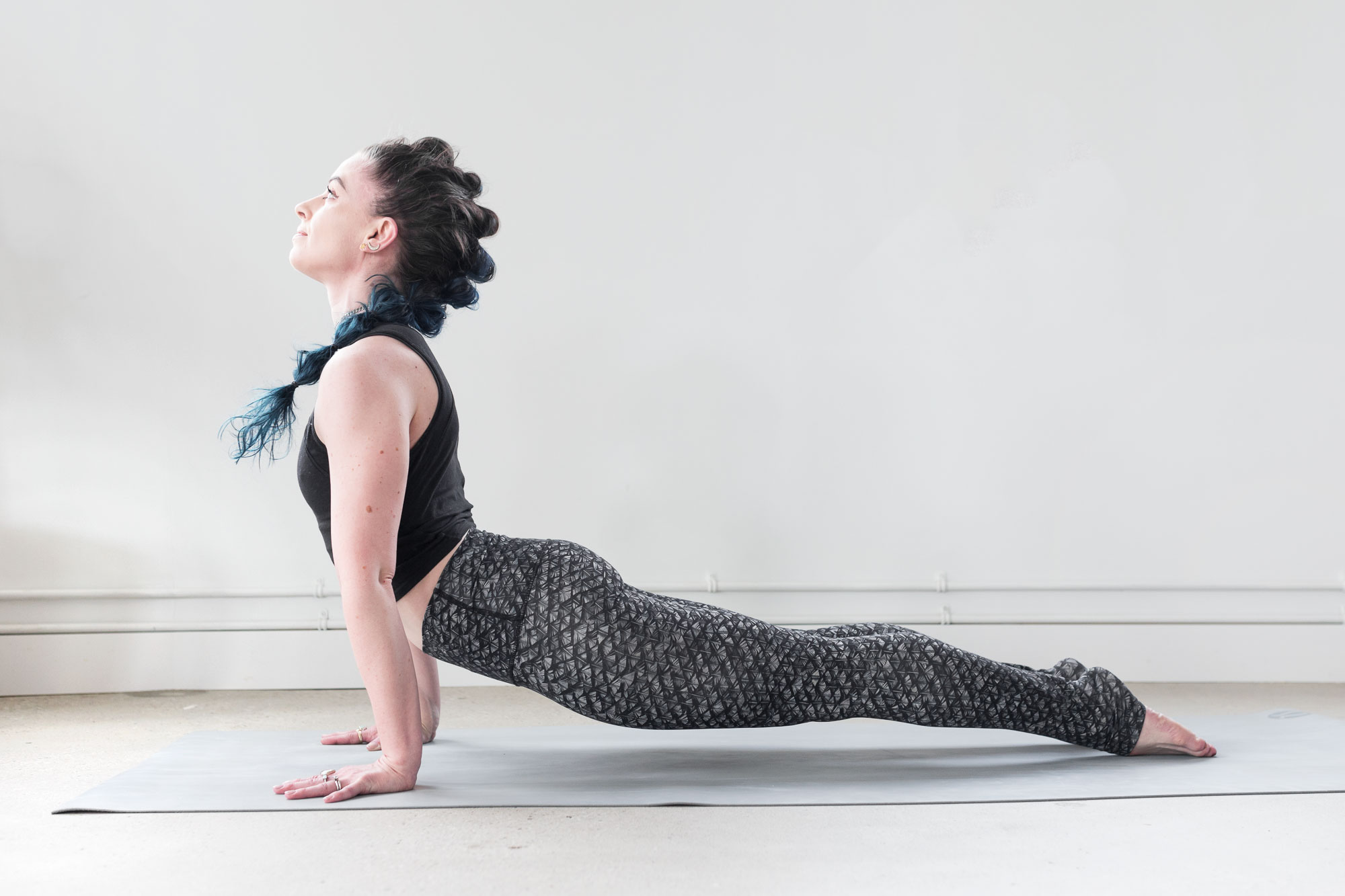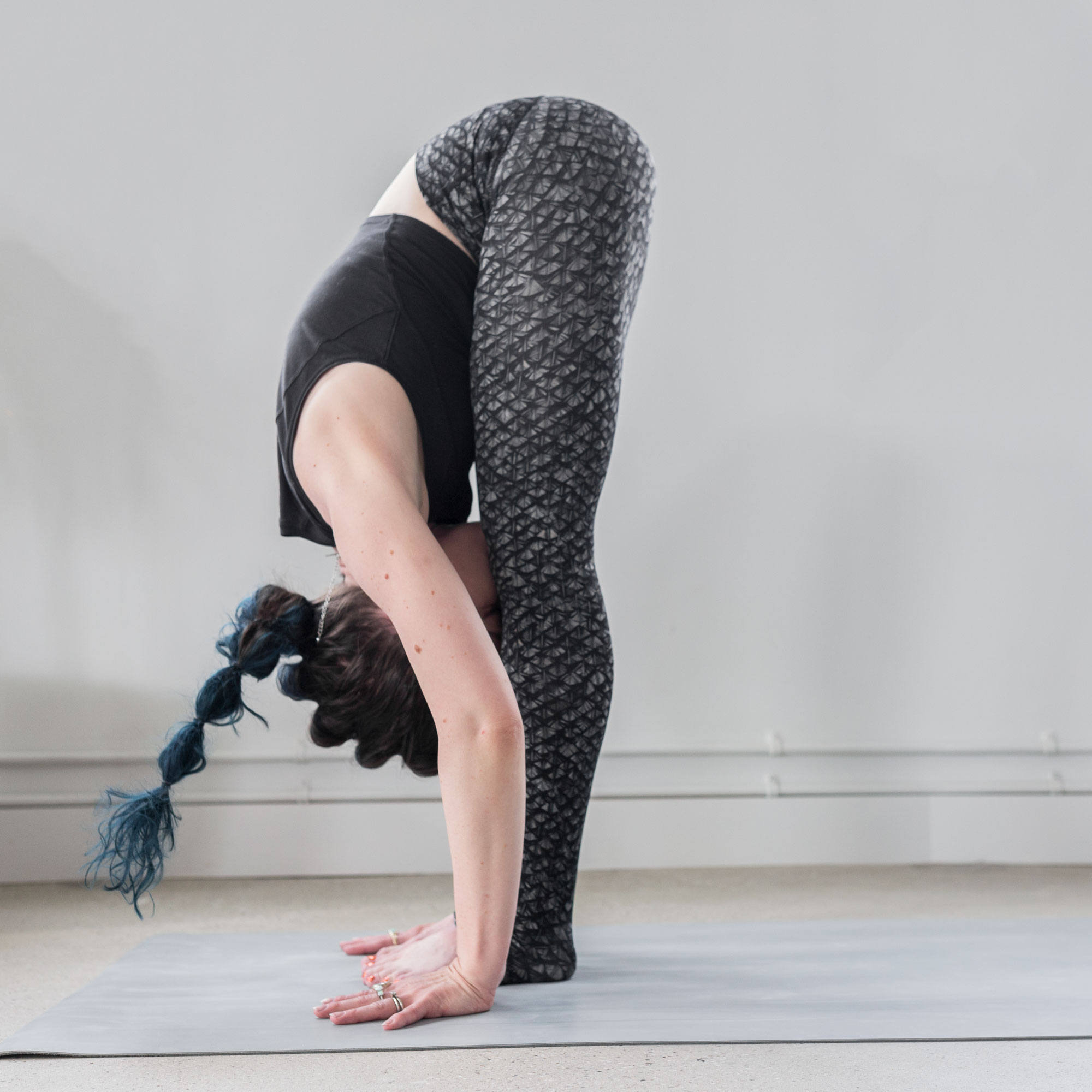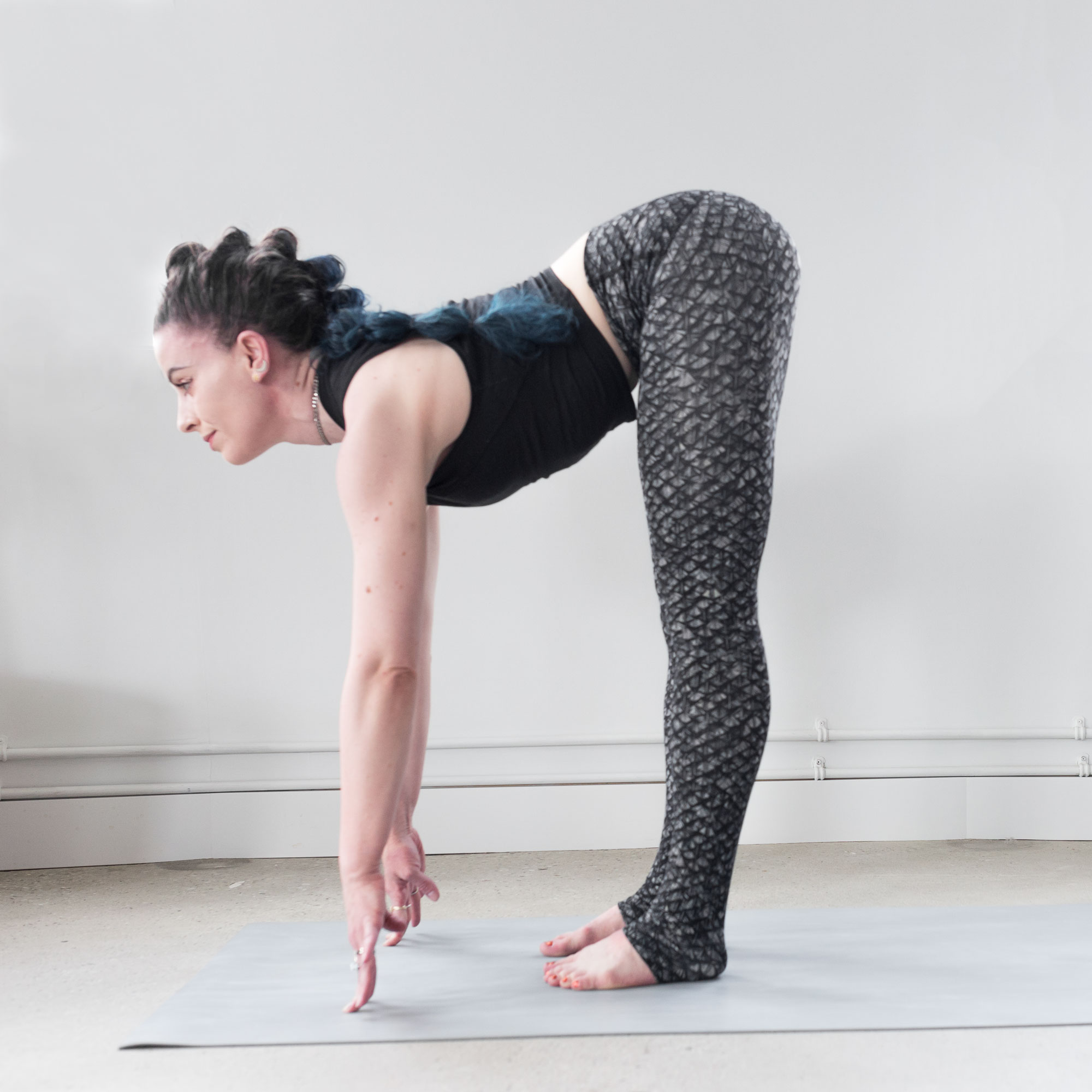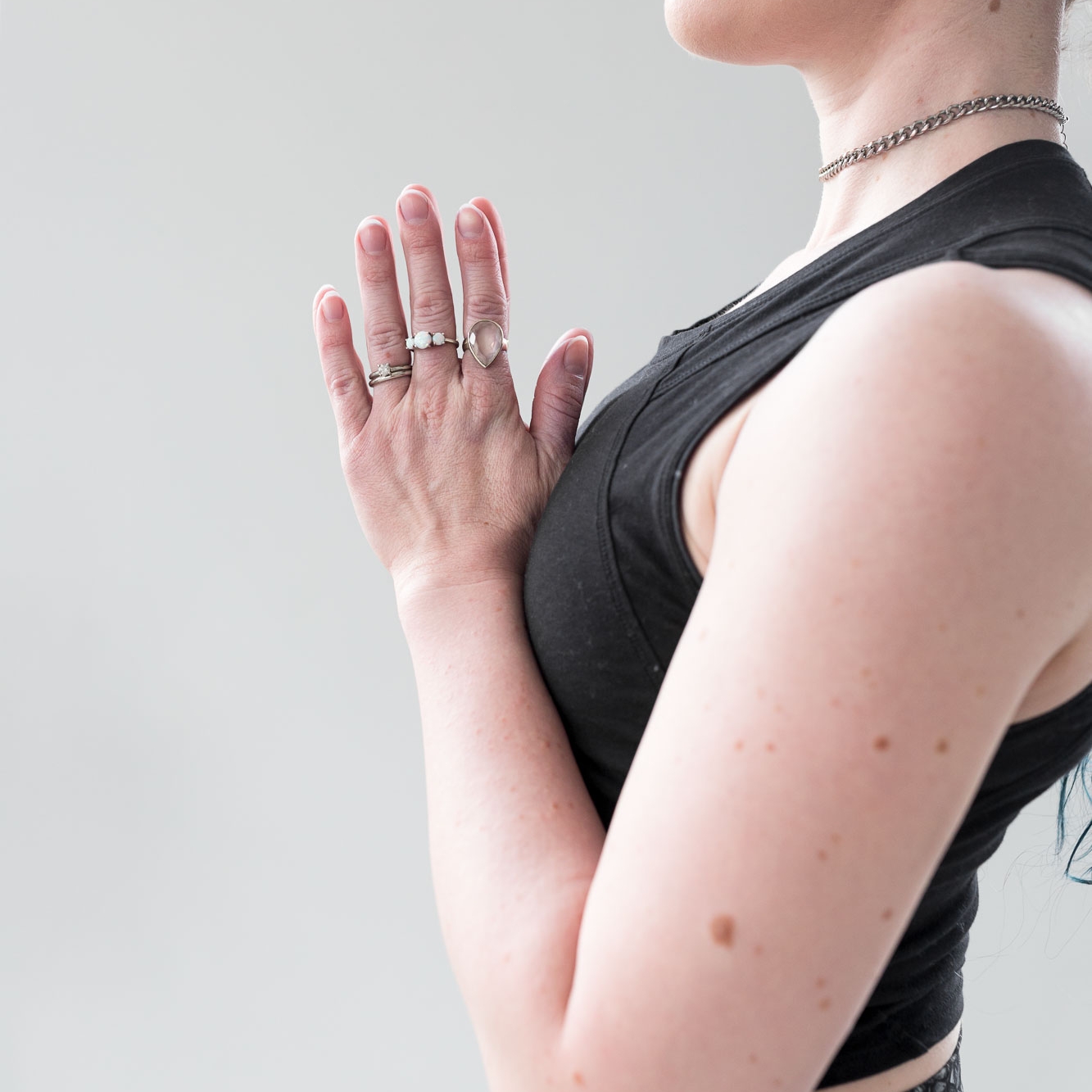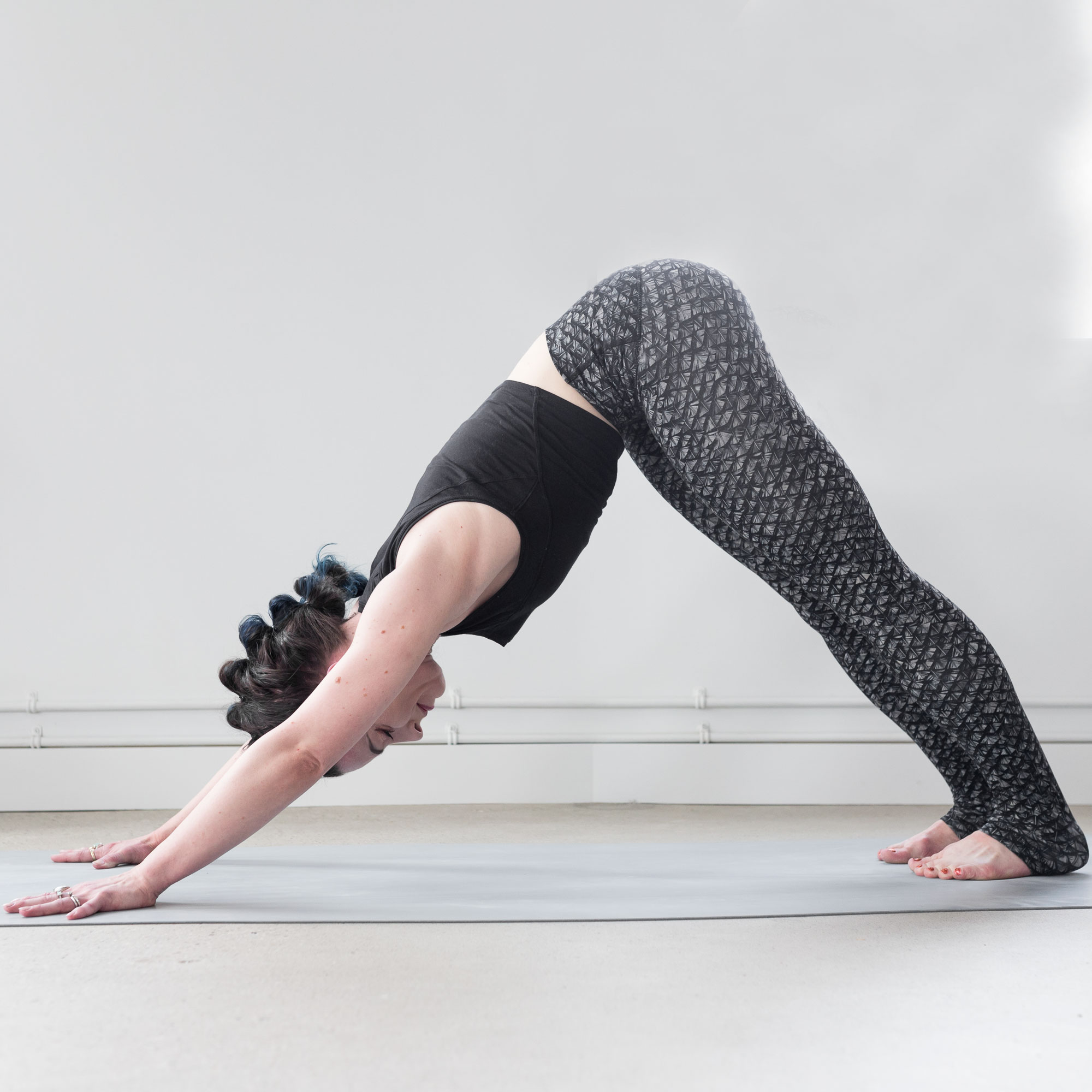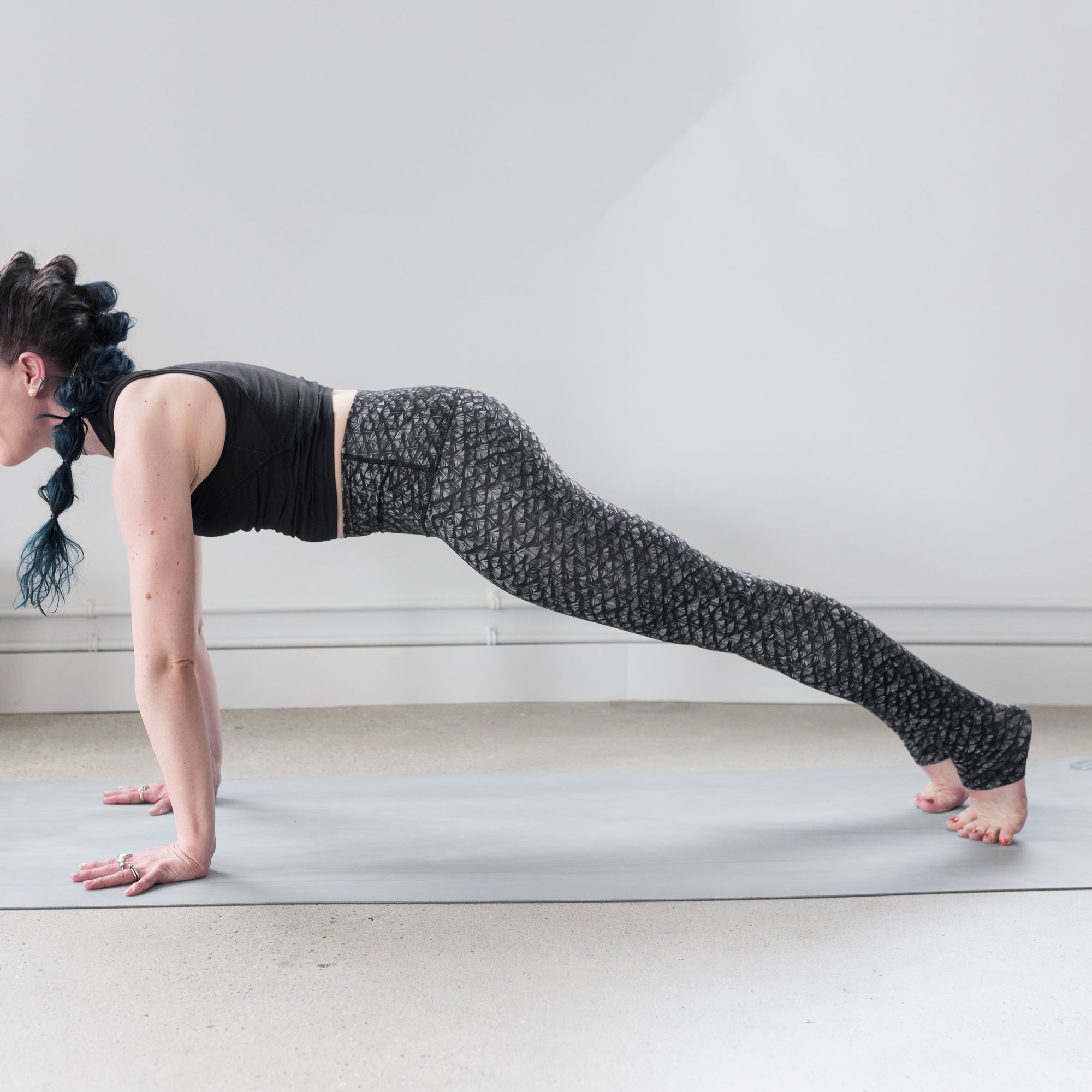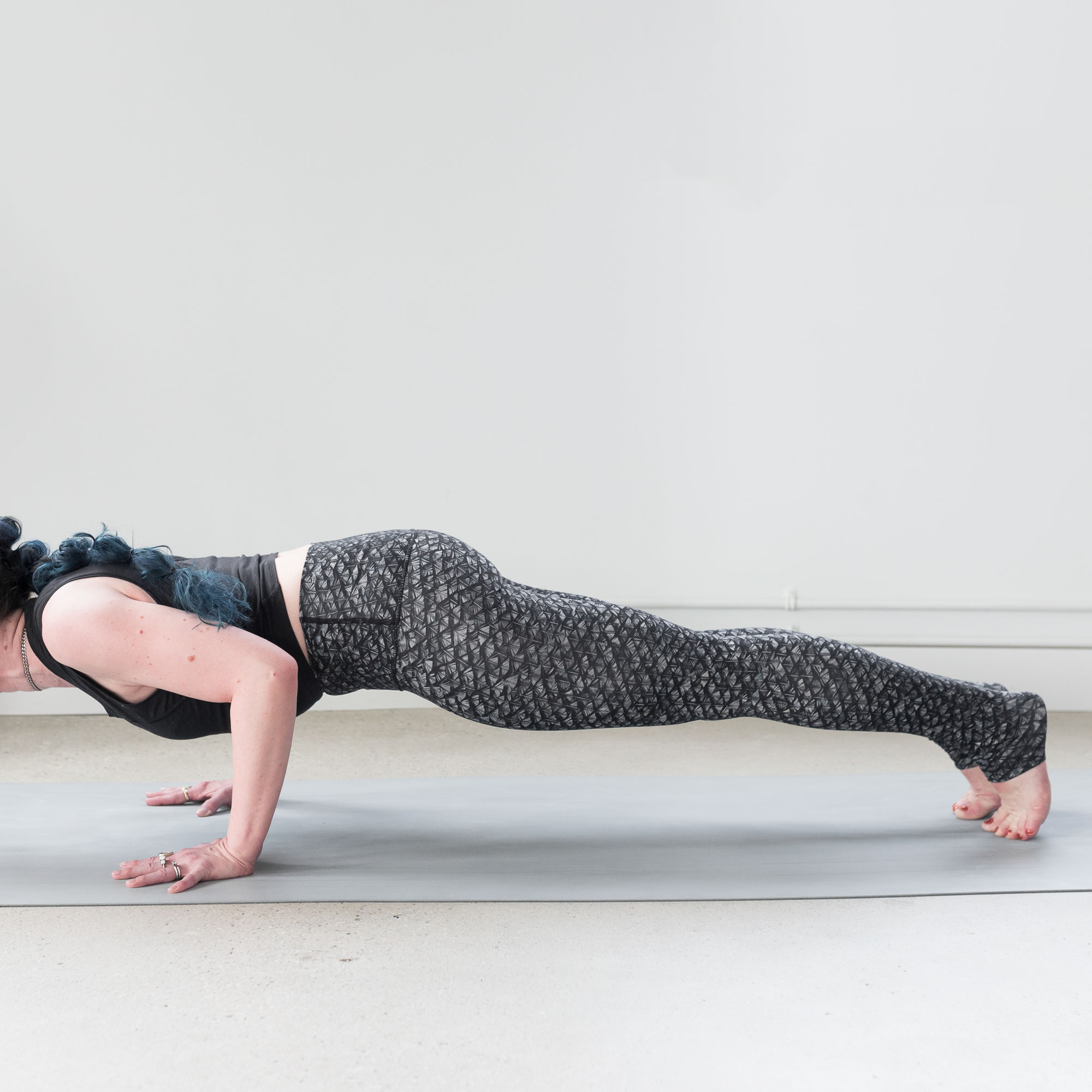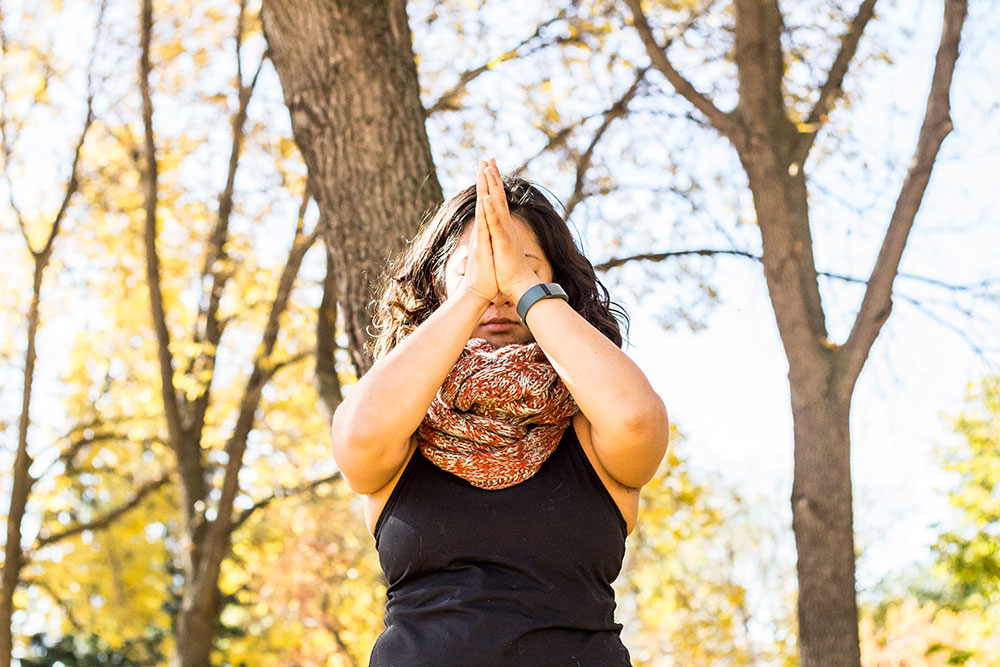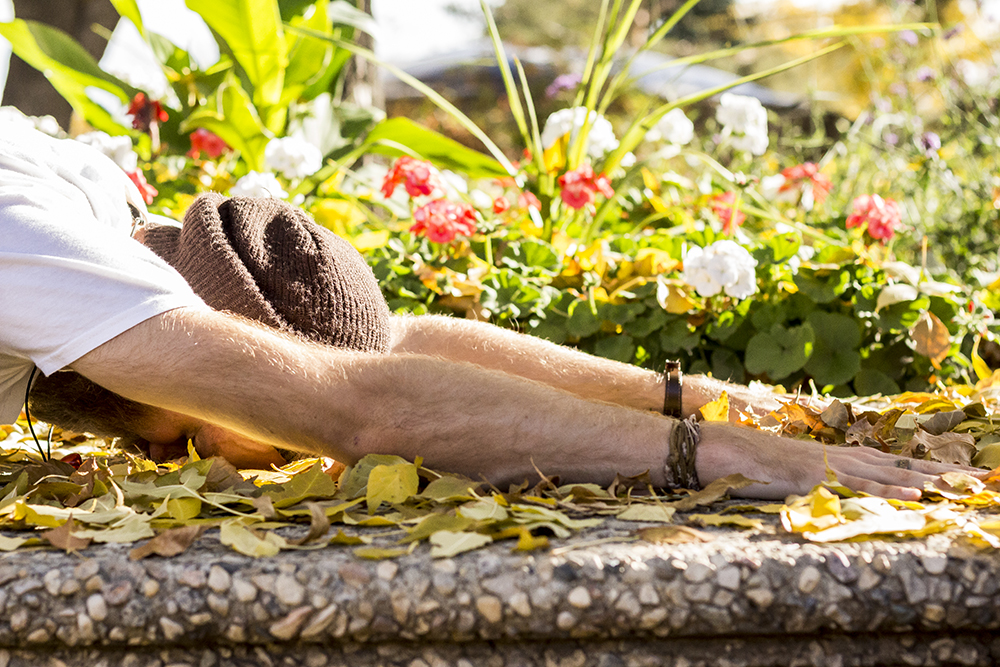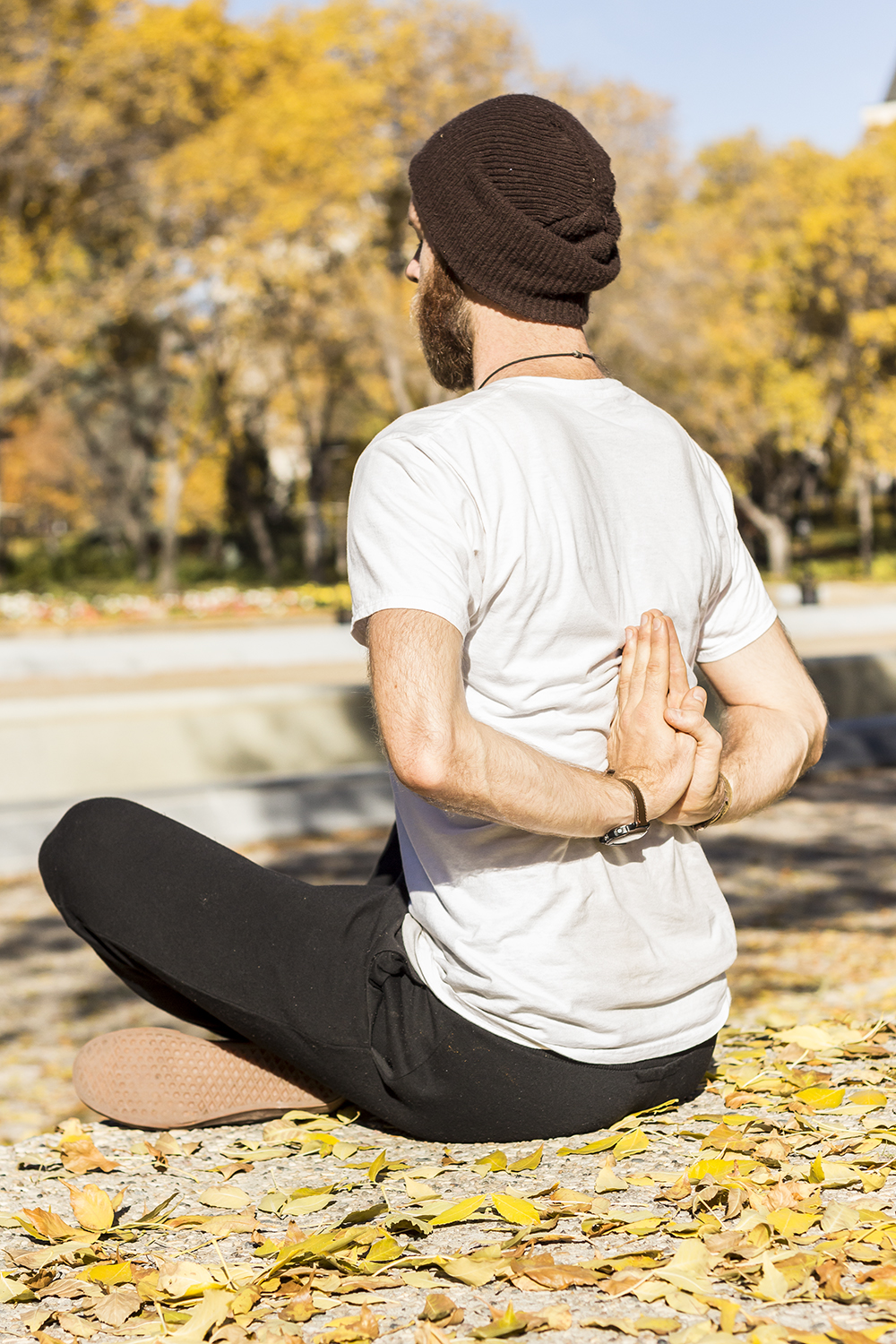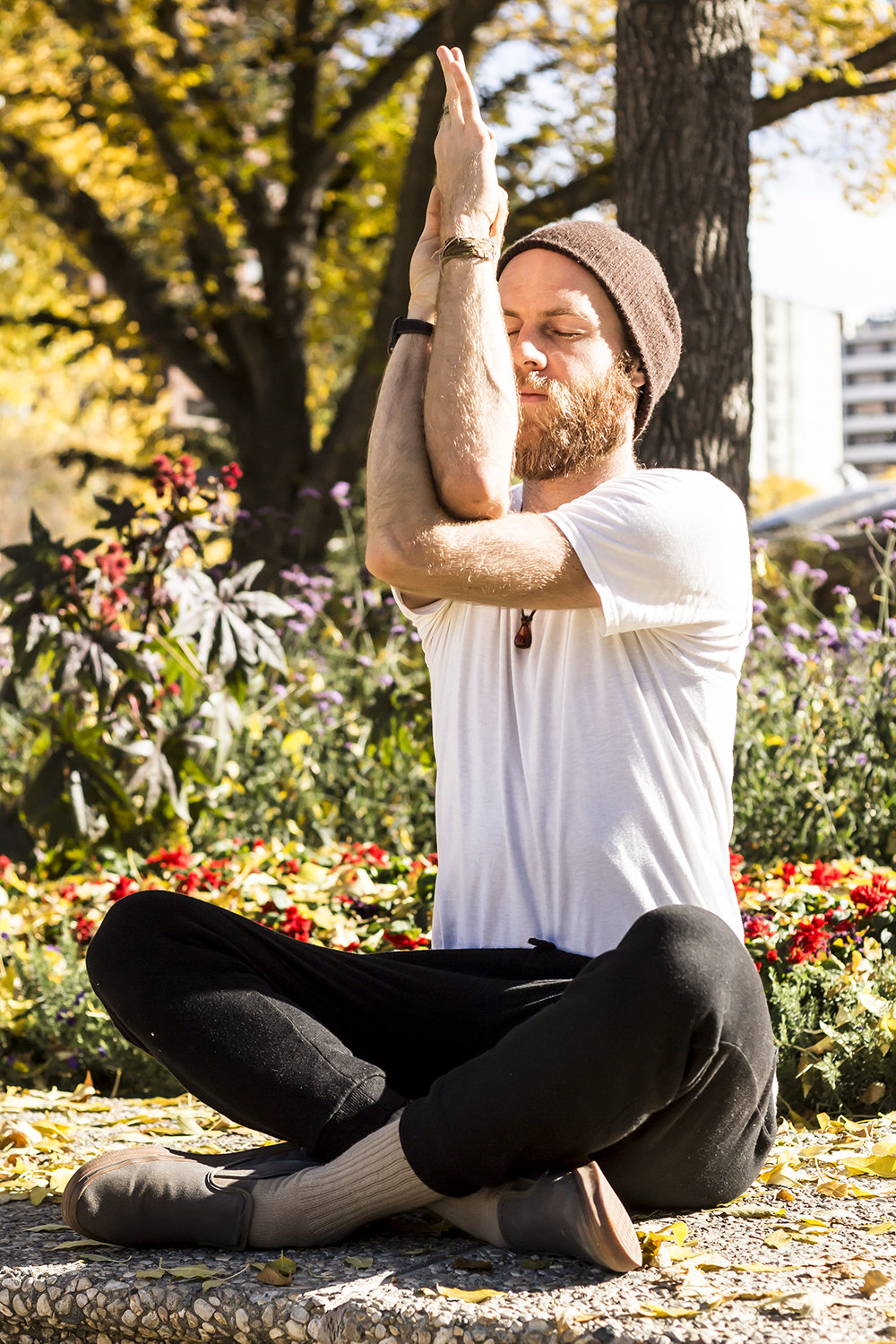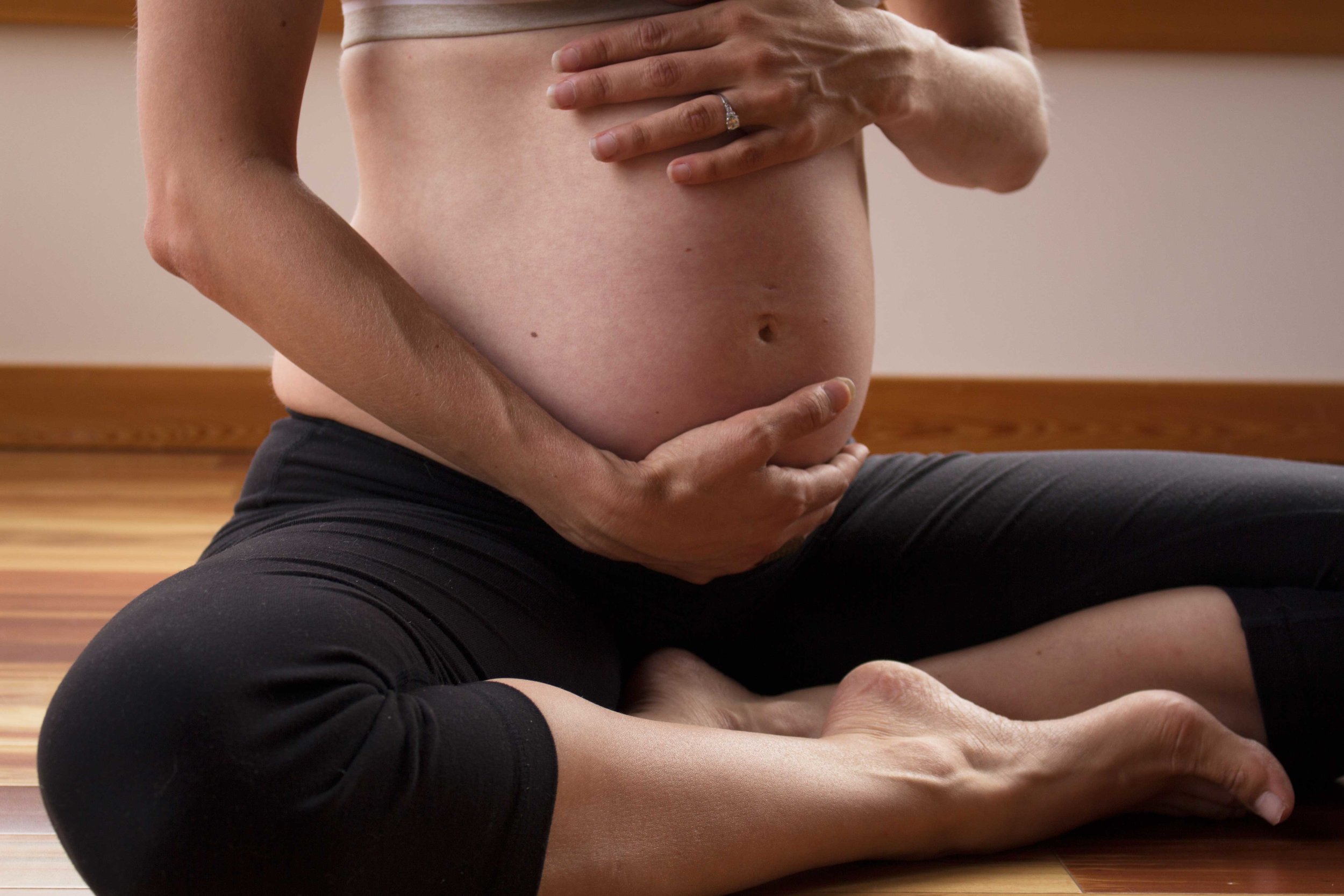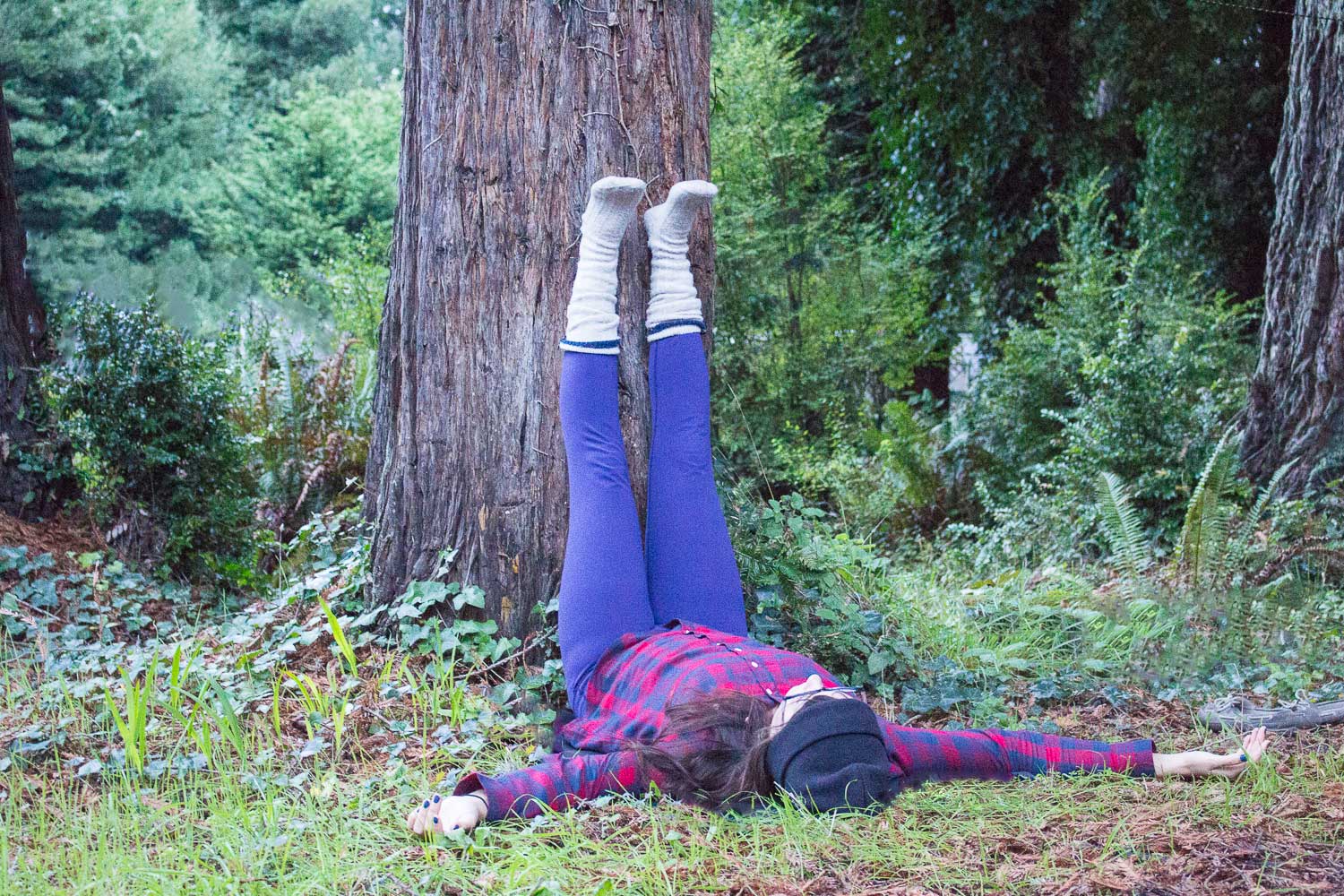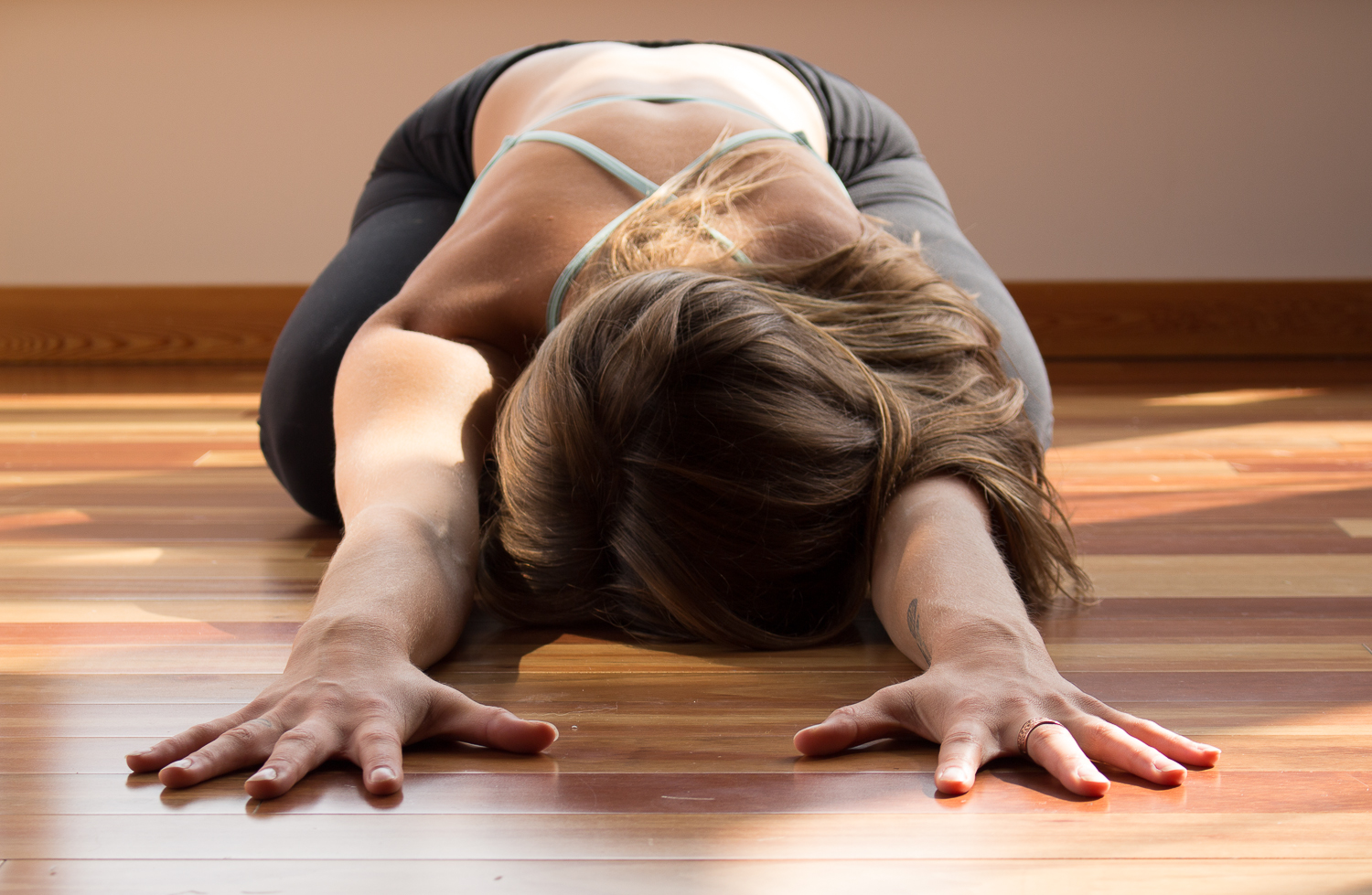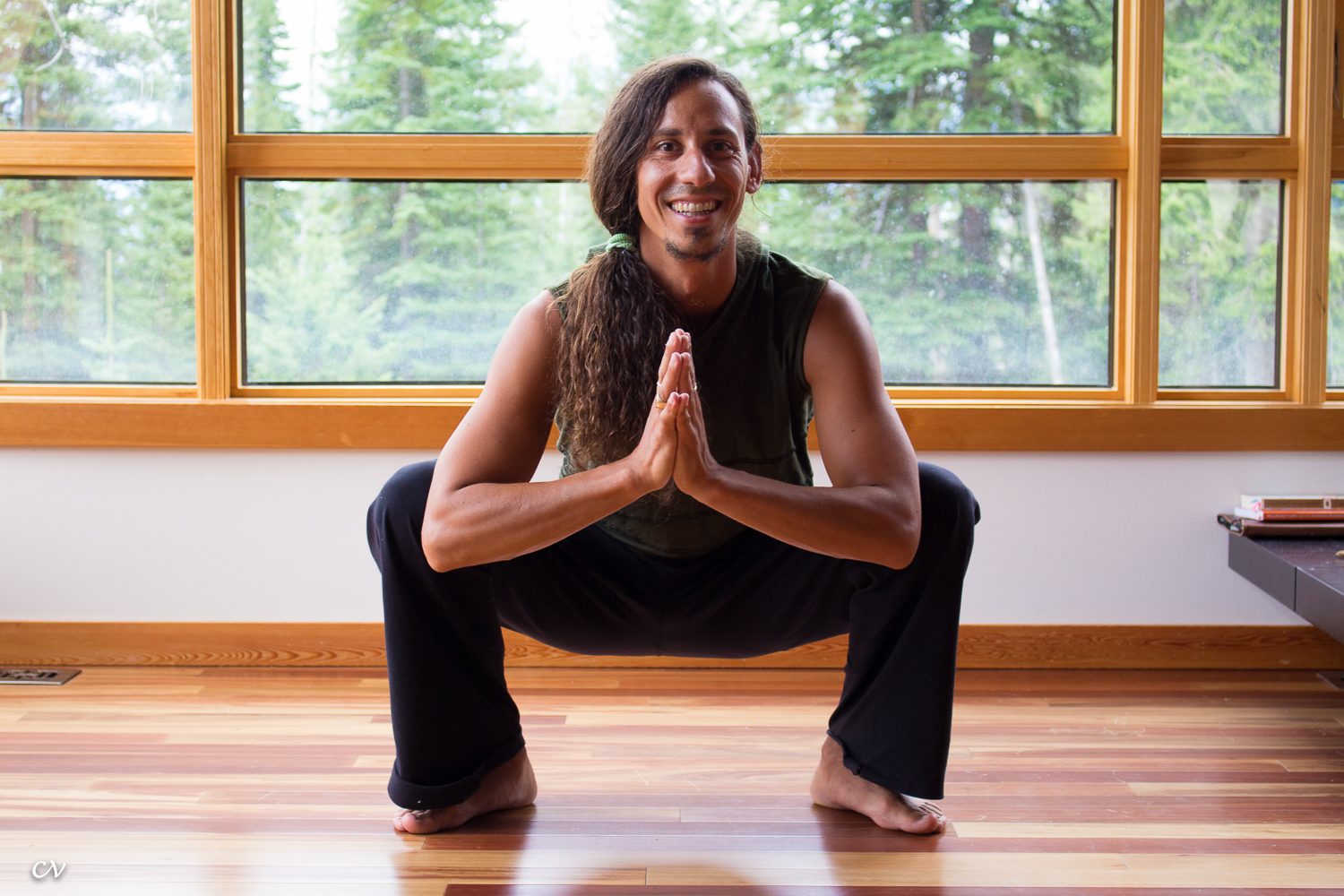Break It Down: Vinyasa
VINYASA, TRANSLATED:
“To move or arrange in a special way”. It can also mean “movement” or “position of the limbs”.
Written by Kristine Owen Wood | Photographed by Caitlin Varrin
What is Vinyasa?
One term, many meanings!
Vinyasa, translated:
“To move or arrange in a special way”. It can also mean “movement” or “position of the limbs”.
Vinyasa, the style of yoga:
refers to a strong, dynamic, continuously flowing practice which aims to seamlessly integrate movement and breath. a.k.a, ‘Moving Meditation’: The relative quick pace of Vinyasa Flow with its emphasis on matched breath/movement and fluid transitions between poses allows many practitioners to relax habitual thought-loops and enter an embodied “flow state” of being. Same same but different? Styles of yoga at Yogalife which are synonymous with, derived from, or closely related to Vinyasa include “Ashtanga”, “Rocket”, “Sattva”, “Flow”, and the “Yang” portion of “Yin/Yang”.
Why break it down?
Vinyasa classes tend to move more quickly than slower styles like Hatha and in order to “keep the flow”, might not always provide as much in-depth alignment instruction. This can sometimes result in confusion for newbies! It can also create a situation where the most often-repeated set of movements are amongst the least fully-understood.
Potency of practice:
Developing a clear understanding of how to approach Vinyasa for your body, through your body, is essential for unlocking the full potential of your “flow state” experience. Below is a step-by-step guide to aid you in this journey!
Vinyasa, the flow of movement:
“Vinyasa” can also refer to a very specific cycle of poses that repeats throughout any of the above-mentioned class styles.
Rise & Shine!
Vinyasa will often appear first in the course of opening Sun Salutations as a method of evenly warming up the body.
The groove that binds us:
Subsequent Vinyasas alternately serve as fire-stokers, neutralizers, palate-cleansers, and an efficient, elegant method of transitioning from pose to pose.
Full Vinyasa, unmodified
Click on image for more details!
Half Vinyasa, unmodified
Click on image for more details!
Awesome Mods
Mythbuster: modifications are not in any way “lesser” the main pose. In fact, modifications are a highly intelligent way to adapt poses to meet your practice where it’s at and ensure that you build the space and strength you need to evolve, sustainably.
Forward Fold & Halfway Lift
Place blocks underneath hands = more room to stretch out backs of legs & lift through chest
High Plank >> Low Plank
Lower knees to floor = more power to practice correct upper body alignment & thus gain strength. Place blocks under hands to create more height & space in plank.
Upward Facing Dog
Cobra instead! All of the backbendy goodness without undue strain on wrists, low back, or feet. Blocks under hands = more space for spine to lengthen & curve.
Downward Facing Dog
Try Puppy Pose instead! An active version of Child’s Pose (press palms into floor & keep chest & shoulders lifted), it relieves hamstrings and takes pressure out of shoulders and wrists while maintaining energy. Or, place blocks under hands to create more length and space throughout the shape.
Whether you're in that full flow or working with modifications and props, there is a comfortable way to build strength through vinyasa for every yogi!
Listen to what makes your body sing and let that be what guides your practice.
Namaste
4 Poses to Embrace the Radiant Energy of the Full Moon
The full moon is a time to express, play, create and ignite! At this phase in the lunar cycle we can check in with intentions set at the new moon, summoning the full expansion and expression of these goals. We can stoke the fires of our potential and play with endless possibility. Everything is intensified during a full moon, so creating a calm internal landscape and feeling grounded in your space will help to channel this powerful energy. Today we are sharing 4 poses with variations to ground into your body and earth while embracing the radiance of Luna's sweet energy!
Downward Dog
A staple in most asana practices, Downward Dog brings us through our whole body. This shape connects us to the earth and the sky as we cultivate a full body stretch and awakening. In your full moon flow, think of grounding your hands through your mat and into the earth to anchor and stabilize you. Breathe into the back of your heart, feel a full expansion through your belly and torso and imagine the energy of the moon bathing over your back and absorbing into your spine.
Playful variations on downward dog can manifest as simple, gentle movement to lifting a leg and finding more space through your side body. Let this expression come from a place of sensation - moving because it feels good. You may choose to flip your dog over into wild thing if you're feeling spicy, shining your heart straight up to the full moon! Make sure you are warm before adding this back bend into the equation.
Bridge, Wheel or Standing Back Bend
Back bends create space in the front energy line of the body, opening us up to receive in our heart centre. As you come into your pose, feel a deep connection through your roots: the parts of you touching the earth. Again, any variations within this asana will create grounding, connection and expansion, so whether you are pressing into your hands and feet for wheel, your shoulders and feet for bridge, or simply your feet for a standing variation, visualize a strong connection earthward. From here you are drawing your heart towards the sky, absorbing the energy from above through your front body.
Back bends are energizing as it is, so take time to restore and sit with the sensations of the opening after each round in your practice. Breath is the key tool for expanding deeper within each variation, breathing into the back of your heart so soften and create buoyancy.
Warrior 3 with Half Moon Variation
Balancing poses allow us to liven up our entire system; we draw energy from the earth and connect with our core to stabilize, we find the meditative "sweet spot" as we gracefully suspend our bodies in space. Warrior 3 channels our visual awareness down into the earth, growing invisible roots from our eyes into the ground. We feel that same awareness radiating up through our back body as if the back of our heart was staring at the moon. It is from this pairing of deep connection both earthbound and to the sky that we can then expand and deepen into the pose.
With hips squared down to the earth we can play around with variations in our arms: arms in a T shape to expand beyond our mat; hands clasped behind our tailbone to bring space to the front of our heart and shoulders. Invite radiant breath to expand and micro adjust in your shape. To transition into half moon pose, reach a hand towards the earth to stabilize, steadying your gaze down first, then invite the opposite hip to stack, opening your pelvis to the long edge of your mat and bringing your arms, shoulders and ribs to stack as well. Gaze may follow towards the moon, continuing to receive the energy from above and within.
Child's Pose
With the electricity of full moon energy it is important to ground into yourself - to rest and relax. If you are creating a high energy full moon flow, you may choose to invite a nice long child's pose towards the end of your practice as you start to bring the energy down. If you are focusing on a more slow, steadying and grounding practice, you may come to this asana frequently throughout your practice. Feel your breath wash over your back body, ride the natural wave of your spine, and feel that space absorbing the radiant energy of the full moon!
What are your favourite full moon poses? Connect with us on Twitter and Facebook, or IRL at Yogalife Studios North or South!
Yin Yoga? Yes Please!
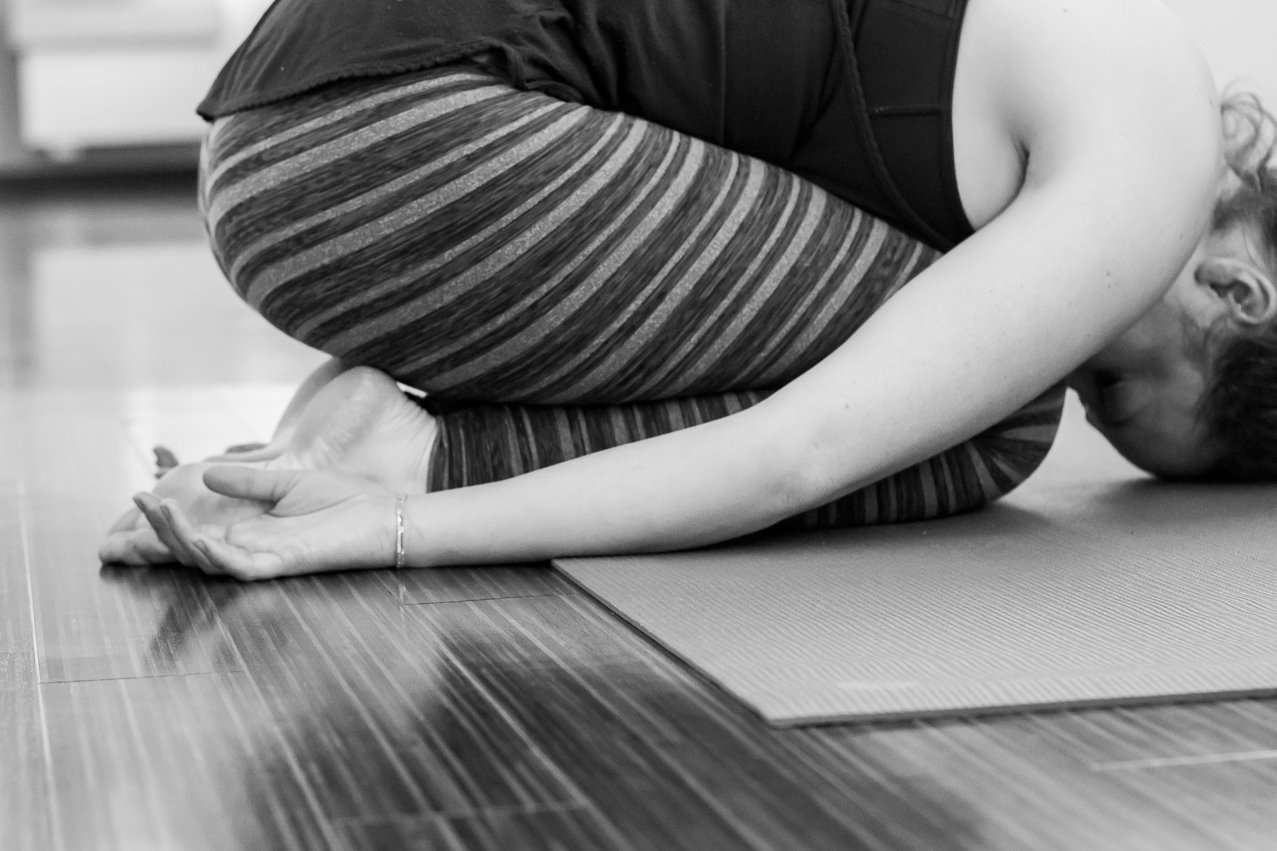
The motion of yin and yang generates all things in nature. MEH JIUZHANG & GUO LEI
Finding Balance with Yin Yoga
Balance is a byproduct of yoga, something we bring into our practice intentionally or a natural result of taking time away from busyness and distraction to move inward. We can look at the balance of how we practice, noticing what we are attracted to or shy away from within our yoga. Our body wants to be in a state of balance, both energetically and physically.
Balance involves two sides, the yin and the yang. When we are striving to achieve a balanced practice, we must consider both yin and yang yoga of importance. Yang yoga constitutes the majority of the physical practice that happens when we come to our mat. The act of "doing": igniting our fire and actively using our bones and muscles to move through our sequence. Activating our breath and bringing heat and focus to our movements. Yin yoga is the opposite, the "working soft", the gentle experience. With passive shapes and smooth, easy breath, this practice is intended to give all the work over to gravity.
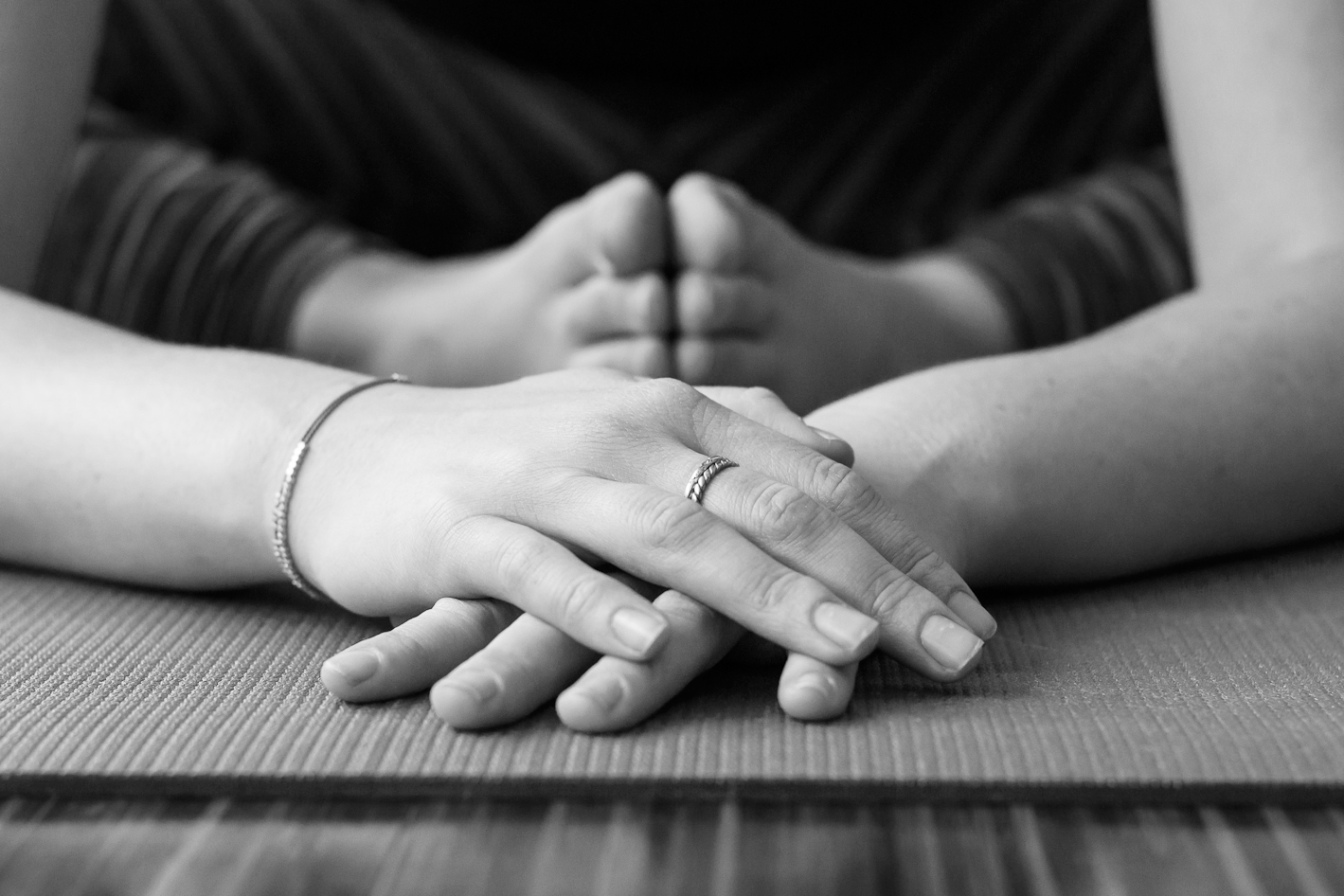
Yin Yoga Explained
Yin yoga is a passive practice that incorporates long holds to soften, lengthen and cleanse the body. This practice targets the connective tissues of the body, the most abundant and widespread type of tissue in our systems. Its function is primarily to support, anchor and connect various parts of the body and includes ligaments, tendons, bones, cartilage and blood to name a few.
Often these connective tissues are referred to as "dry" tissues; yin yoga is intended to lubricate the body and ensure the cleansing and longterm health of the tissues. Everyone can and will benefit from this practice and it is the perfect compliment to any physical activity.
“Yin Yoga is simple, but simple does not mean easy.” ― Bernie Clark, The Complete Guide to Yin Yoga: The Philosophy and Practice of Yin Yoga
Along with the physical benefits of yin yoga, the mental and emotional bodies are influenced as well. This practice is one of decluttering the mind and cultivating stillness. Trauma and emotional "stickiness" that builds in the body over acute stresses or past issues begin to organically exit the body as these deep tissues begin to soften and relax. This practice may look easy on the outside, but often yin practitioners will learn that finding this stillness and fully, truly letting go may be the hardest part of yoga. Like any self-work, it takes practice. The body begins to naturally soften and open over time, with patience.
Learn more about Yogalife Studio's yin yoga classes available at north and south.
21 Benefits of a Regular Practice
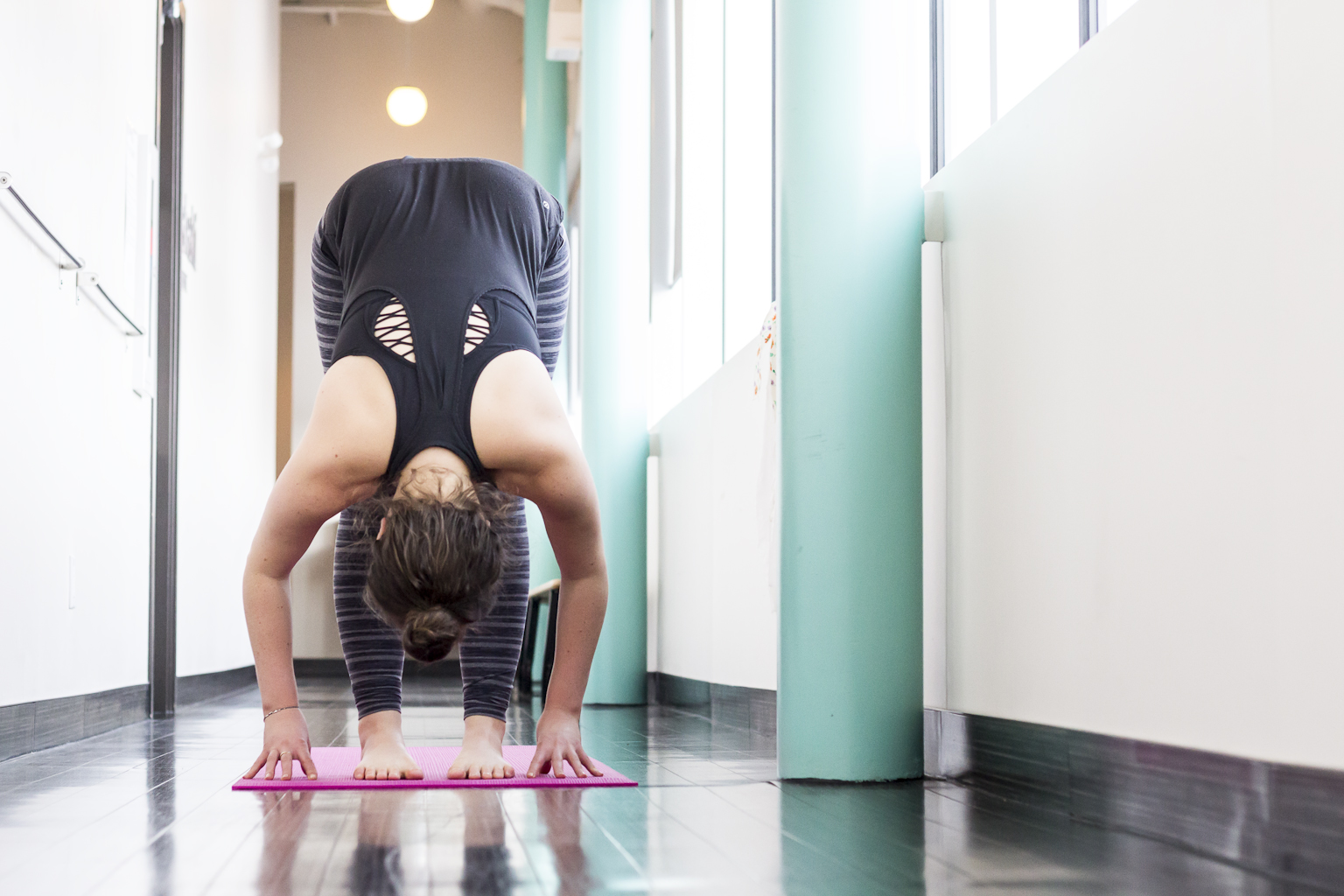
We are into the last week of the 30 day challenge and we couldn't be more proud of all you yogis that have shown up day in and day out to deepen your practice. Making time for your mat is a huge commitment with even huger payoffs, as you're probably starting to notice. And for our whole community that shows up when they can, remember that yoga isn't just being on your mat. In fact, you probably practice yoga every day in different ways that might not be in the forefront of your mind. Conscious breath while you prepare meals, a relaxing bath, reading a book or listening to your favourite tunes, being mindful and clear in conversations - these are all examples of a yogic life.
Never judge or compare on this journey. Practice practice and all is coming.
We encourage you to keep up your regular practice! Please enjoy this list of benefits and notice which ones land with you. Celebrate your successes, celebrate your areas of opportunity.
This list comes to us from by Rucha Tadwalkar at www.mindbodygreen.com. You can view the full article here!
21 Signs Your Regular Practice Is Working
1. Your happiness comes more from nurturing your mind, body, and spirit, rather than from other people or material objects.
2. You're able to express yourself without hurting others.
3. You view challenges as opportunities for growth.
4. You know the right thing to do, and you do it.
5. You feel compassion for others, including people, animals, and the earth.
6. You accept your current circumstance or situation, and either feel grateful for it or work toward improving it.
7. You begin to appreciate things that you once took for granted.
8. You focus on the solution, rather than the problem.
9. You try to maintain an ongoing positive attitude and recognize when you feel off-balance.
10. You love, appreciate, and respect yourself.
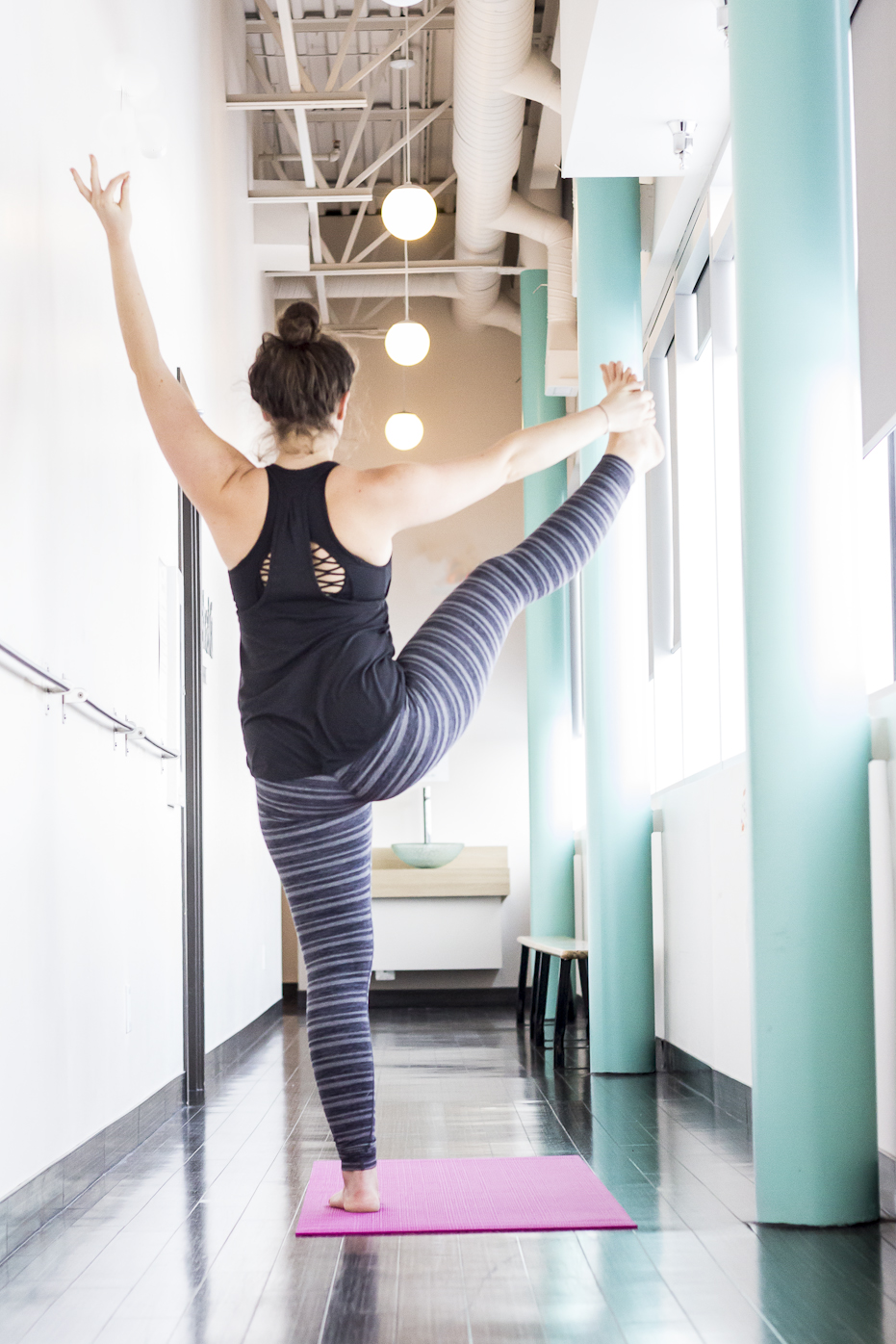 11. You listen to your intuition.
11. You listen to your intuition.
12. You not only genuinely feel happy for others’ successes, but also try to support them in the best way you can.
13. You think more about what will benefit the greater good, instead of what will benefit yourself.
14. A willingness to work through resentments, let go, and move forward.
15. You feel calmer in your daily interactions with others, as well as in situations that may have once caused anger.
16. You realize you aren’t perfect, and life is a series of lessons to help you continue progressing.
17. You start making time for the things you enjoy doing.
18. In a given situation you ask yourself, What is happening here, instead of, Why is this happening to me.
19. Others feel happy and positive just being around you.
20. You continue seeking and finding ways to feel inspired and motivated.
21. You make conscious efforts to bring your awareness back to the present moment.
We LOVE having you around, so keep up your regular practice! Share your challenge stories at info@yogalifestudios.ca for a chance to be featured on the blog!
A Quick How-To: Garland Pose
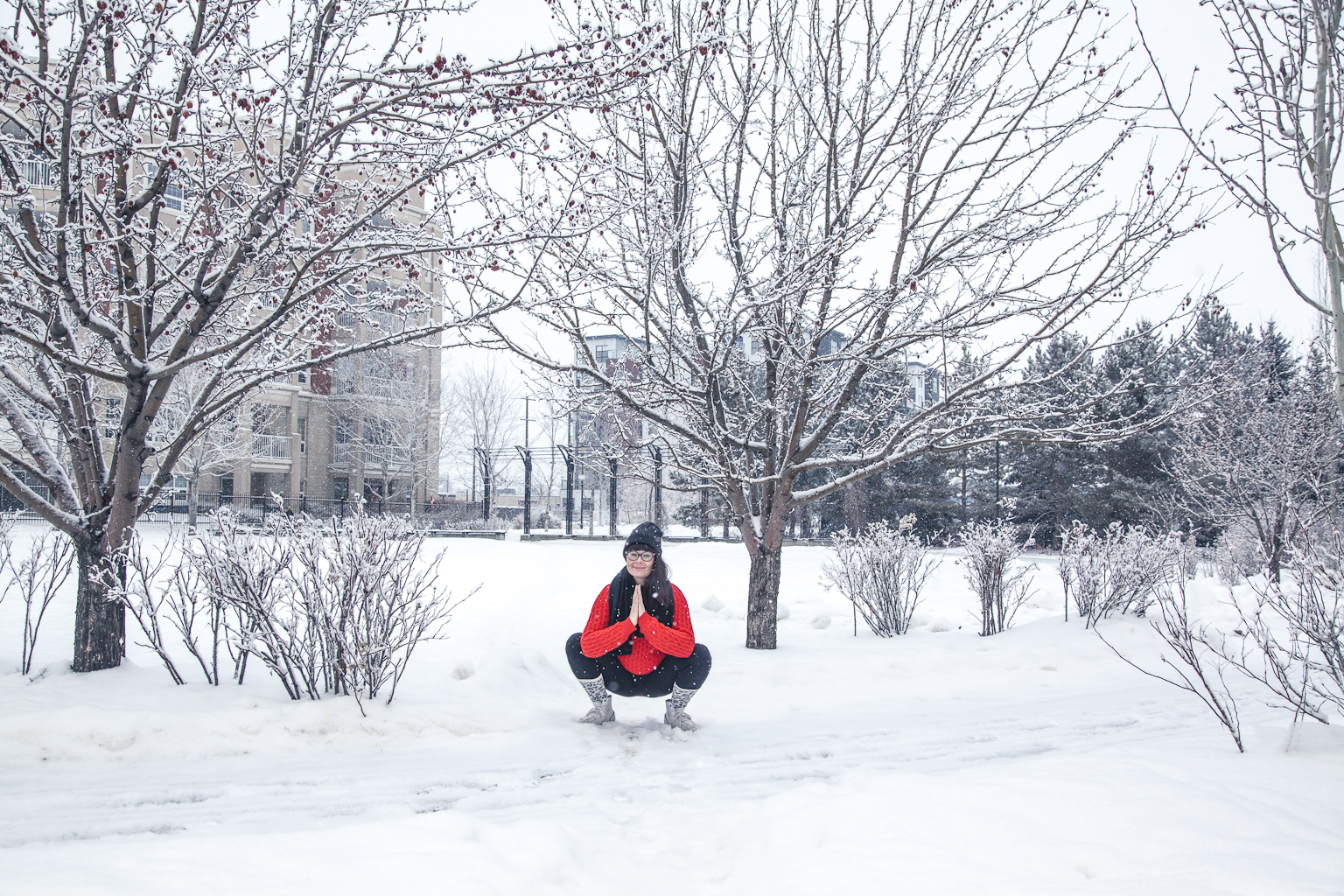
Garland Pose or Malasana: happy hips, inner peace
Make space in your hips
Garland pose, malasana, or simply "yogi squat" is a wonderful way to open and lengthen your hips. If you sit at work, in your car or at school for long periods, your hip flexibility may suffer; the inner thighs, groin, and hip flexors can shorten and tighten, leading to poor posture and back pain. Use this pose to create more mobility for your daily activities.
Cultivate peace and focus
Malasana can be used to cultivate inner peace; a gathering to centre with prayer mudra creates a calm focus inward. In India, mala beads are used in prayer and meditation as a steadying metronome to count prayers (the sacred cycle is 108 - the number of beads on a mala) and are often used traditionally in rituals offerings and altar decorating.
Benefits of garland pose
Garland pose is the perfect stretch for the groin, thighs, hips, ankles and torso. It increases circulation and blood flow to the pelvis and improves balance, concentration and focus. Garland pose helps to prep the body for for meditation by relaxing the hips and gathering focus, and is the best prep pose for crow, or bakasana. Finally, this pose tones abdominal muscles and helps lengthens the spine.
** If you have complications with your knees or this pose doesn't feel right, don't force it. Always listen to your body and work within the realm of your practice in that moment.
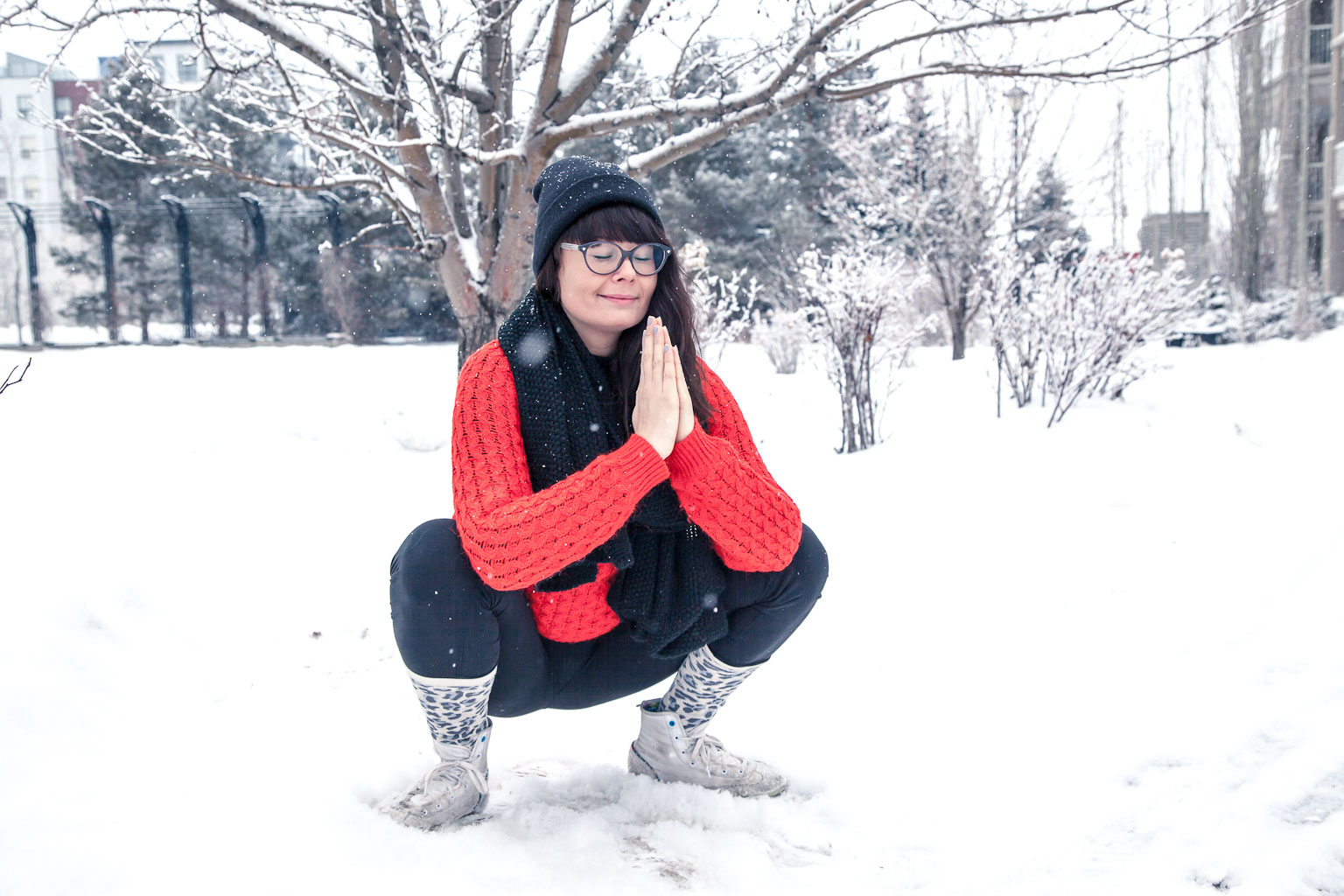
How to get into garland pose
Stand with your feet a little wider than hip-width apart (mat-width usually works!). Turn your toes out slightly, aligned with your knees.
Bend your knees, lower your hips, and come into a squat. It can help to think about sliding your back down an imaginary wall and bringing your weight into your heels.
Gather your hands at centre in prayer mudra and press your elbows into the inner seam of your legs, just above the knee. You may use some slight traction between these two places to open your hips and groin further.
Roll your shoulders onto your back body and lengthen your spine out of your waist.
As you press your palms at centre think about widening your collarbones away from your heart.
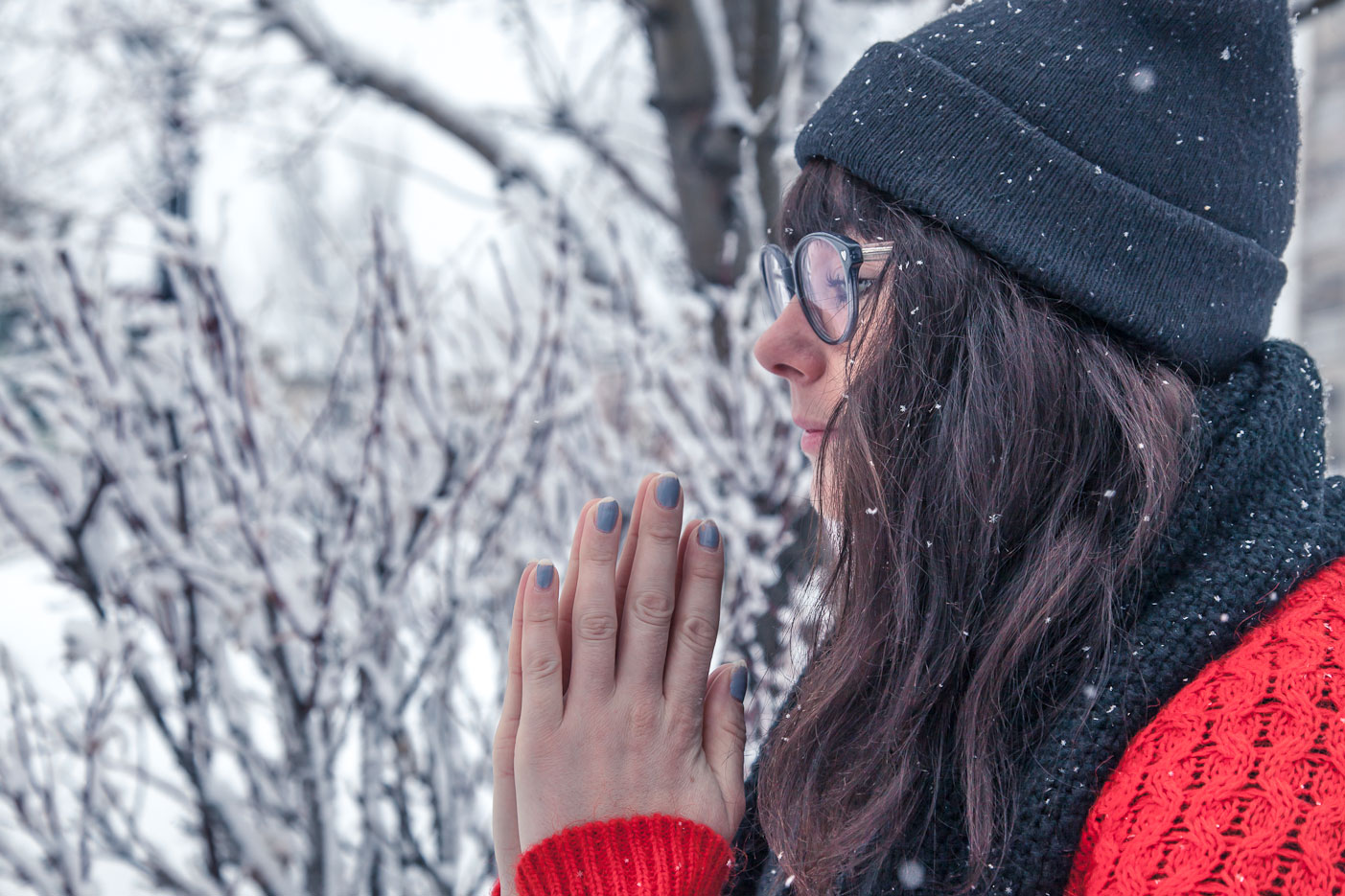
Once you’re in malasana, try closing your eyes. See if you can hold the posture for a minute, or maybe even longer. Perhaps you can feel the downward flow of energy moving through your body. Notice, when you come out, if you feel a little more calm and connected. A beautiful counter-pose is forward fold.
If you're interested in learning more about your hips and the poses to open and nourish this area of your body, check out our happy hips hatha class!
YOGA FOR ANXIETY, FEAR AND STRESS RELIEF
Finding the tools that work for you to manage and overcome anxiety.
Yoga is a practice of many things: self-love, awareness, quiet, patience, balance. We often refer to our mats as a sanctuary where we can escape into peace. For some of us, this may be the only place we feel this relief. Yoga aims to teach us to live our practice off the mat and into the world, but the power of anxiety and stress can overshadow the positive qualities of our practice in our day-to-day lives. Anxiety disorder (and the stuff that comes along with it) is very real for many people - around 12% of Canadians to be exact! This goes beyond pre-exam nerves or date jitters; this form of stress can be debilitating.
Being a human is a work in progress and our yoga practice is just that, a PRACTICE! (not a perfect). Sri Swami reminds us “practice becomes firmly grounded when well attended to for a long time, without break and in all earnestness” in The Yoga Sutras of Patanjali. In other words, keep at it. Sometimes we just need the tools, and then to be reminded of them.

Talk about your anxiety
Anxiety has been a prevalent topic on our blog because it is a very real issue. We believe in the commitment to self through the regular practice of self-love, meditation, asana, pranayama, and whatever else works in YOUR toolbox of life. Above all, it's important to talk about it. If you're feeling alone, know that you don't have to be.
A bit from a past blog:
"The thing that kept me coming back [to my mat] was the knowledge that there was a quiet place within that offered a sensation of control and self-patience I had never quite been able to harness. I guess you could simply say it offered me SOURCE. I found that even when I was off my mat I could slip into this place and enjoy my inner sanctuary. As yoga has become a huge part of my life, it is most certainly a deeply-rooted impulse to honour why I’m here. I absolutely fall off course, have the occasional panic attack and most certainly have bad days, but I know deep down that the place I first fell in love with – that sanctuary in my heart – exists."
Learn more about managing anxiety
If this is something you would life to learn more about join us December 5th for an in-depth offering, Yoga for Anxiety, Fear and Stress Relief with Michelle Chung.
This workshop is specifically designed to help those that suffer from anxiety and stress. Using LifeForce Yoga ® principles and techniques, you will learn to move into more balanced (sattvic) state and move towards positive emotional, mental, physical state of equanimity and self-awareness. You will learn yoga practices that calm feelings of anxiety, which includes asana (postures), pranayama (breathing techniques), relaxation (yoga nidra), yoga chakra sounds and mantras. No previous yoga experience necessary.
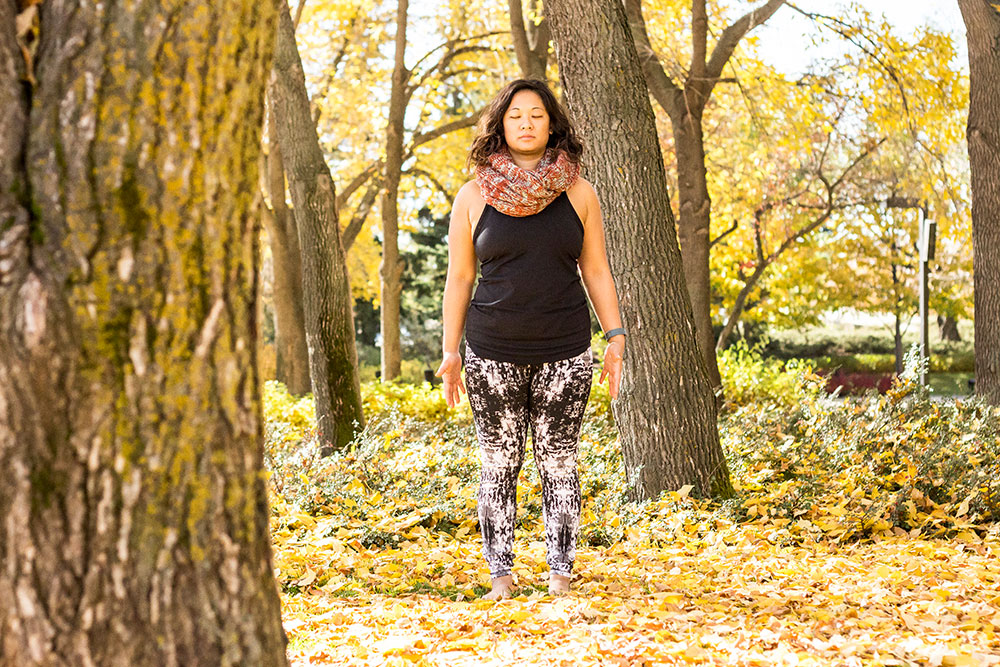
LifeForce Yoga is a practice of compassion that creates a big enough container to embrace and accept all the dualities of mood.
Saturday, December 5, 2015 2:00 PM - 4:30 PM Yoga for Anxiety, Fear and Stress Relief with Michelle Chung Yogalife Studios South
Simple, Supple Shoulders
Try these 3 quick and easy yoga poses to relax and soften your shoulders
It's no joke that we carry the weight of the world on our shoulders. This area of the body is susceptible to tension and injury simply from how we use it, or misuse it. Whether you carry a bag, sit at a computer, drive, or sleep poorly, chances are you've probably experienced some sort of issue with your shoulders.
Enter, yoga. There are so many ways to restore and relax your shoulders through your yoga practice. Today we're sharing 3 gentle, easy poses that can be done basically anywhere. In any practice of healing, breath and intention are always at the forefront of your approach. Remember to go slow and listen to the feedback your body gives you, especially if you are dealing with injury. Forcing into these gentle areas of the body will only prolong the issue, so remember that love and patience are the keys to freedom.
Reverse Prayer Mudra
Because we inherently spend so much time rolling our shoulders forward, they tend to naturally fall that way after time. It is generally only with conscious effort that we roll them back, lift our heart, and feel open across our chest. Inviting space into the front of your heart will help draw your shoulders onto and down your back. This action helps soften the tissues that connect your shoulders to your chest, and places your shoulders back into proper alignment.
- to modify this pose, try grabbing for opposite elbows behind your back
- to deepen this pose, clasp your hands at your lower back and take a small back bend, lifting your gaze to the sky
- in each variation, invite your shoulders to "kiss" on your back, drawing the blades together and down your back
- breathe into the centre of your heart and visualize the heads (front) of your shoulders melting back
Child's Pose
Balasana is wonderful to soften everything from your hips to your fingertips. And what lives between those? Your shoulders! Again, shoulder softness comes with an open heart, so allow yourself to hang out in this space with the support of your forehead and legs grounding you. If your mat and forehead don't connect, place a block in between so you can really let go. Feel your shoulders spreading wide and moving down your back and focus your breath to the space around your heart and armpits.
Eagle Pose
To reach the back of your heart, that juicy spot between your shoulder blades, try eagle pose. This shape helps to open up and soften your shoulder blades away from one another, moving more into the midline of the back. Once you've wrapped your arms in front of your face (or, try hugging opposite shoulders for a less intense version), you may try squeezing your forearms together, lifting your elbows, and gently tucking your chin. Send your breath BIG into the back of your heart and visualize exhales melting away tension.
Want to get more in-depth on this topic? Join us at Yogalife Studios South on November 28 from 2:30-5:30 Psoas & Supple Shoulders w/ Brea Johnson register now!
3 Reasons To Take A Beginner Yoga Class
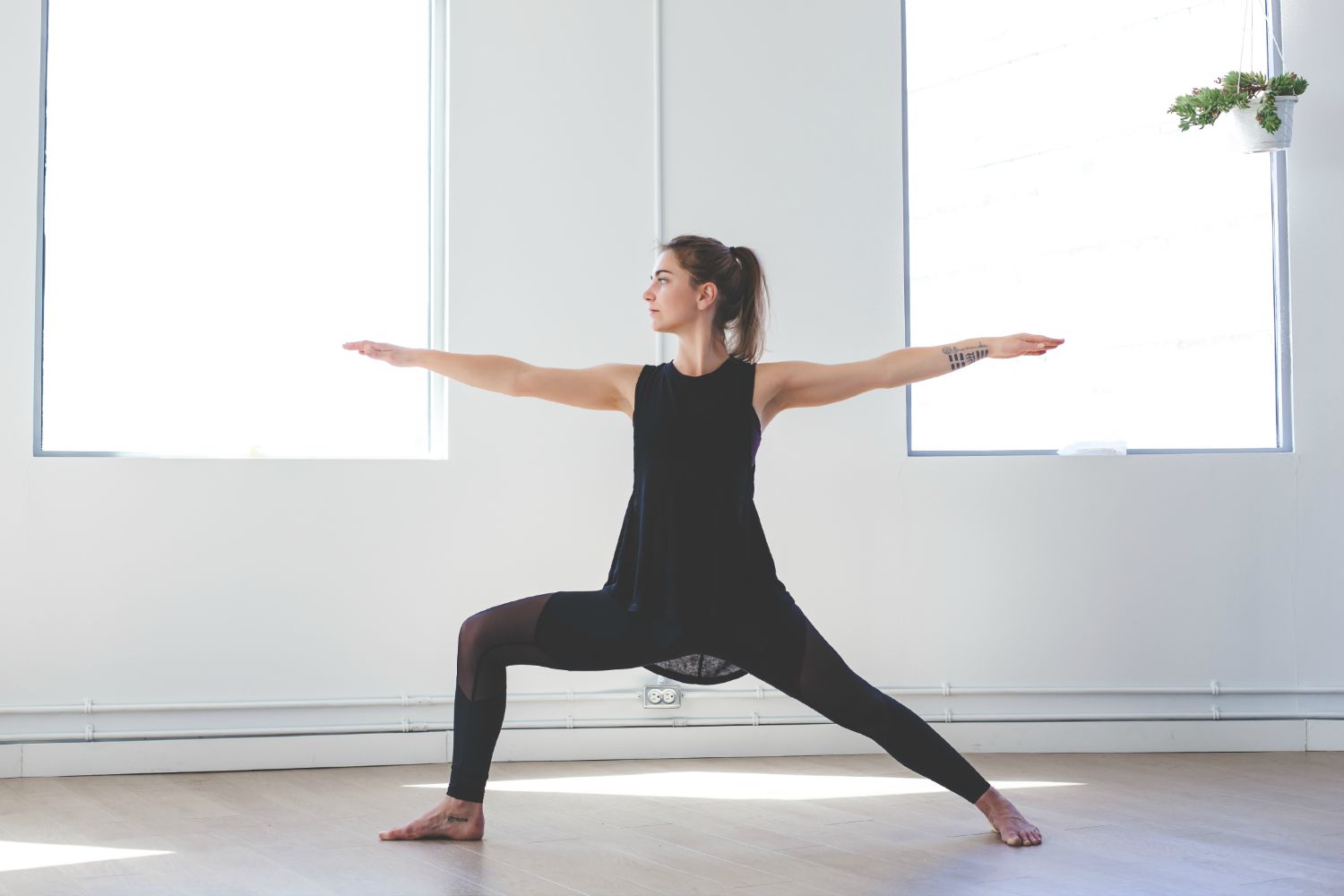 Beginner yoga, a very good place to start!
Beginner yoga, a very good place to start!
When you first decide to unroll a mat and try this yoga thing, it can be daunting to figure out exactly where to start. With so many classes, teachers and styles, it is nice to learn about the foundations of the practice to assist the navigation. As you go through this journey it becomes more clear that it really is about YOU, so why not start at the very beginning, a very good place to start, and allow yourself to truly find YOUR path. Here's 3 reasons to hit up a beginners yoga class, regardless of where you're at in your practice.
Get Acquainted with the System
Yoga is an ancient system comprised of asana (physical movement), meditation and pranayama (breathwork), amongst other things. Any of these facets may arise in a public class and work in unison to create this holistic practice. When you first start out, getting the sense of all these elements in unison may feel a little misaligned. The instructor may guide you to empty your mind, but your mind is trying to figure out what the heck to focus on. A beginner class will break down why and how we breathe the way we do in yoga, the most important piece of the puzzle. Once you harness this breath, the movement and meditation come with more ease.
Learn To Listen
Yoga can seem like a gymnastics routine. Any given class can and will have all levels of yogis there to do their thing, and it is your job as the ultimate teacher to choose YOUR practice for that moment. Whether you modify, rest or go deeper depends on what YOU need, not your acrobatic neighbour! A beginner class offers a pace that facilitates this learning to listen. You will spend more time breaking down poses and figuring out alignment so that you feel empowered to choose what works for you and what doesn't.
Reconnect Your Roots
The phrase "approach your practice with a beginner's mind" is heard often in a yoga class. If you are serving yourself for that exact moment in your day, then nothing you've done before on your mat and nothing that's to come really matters. Yes, your experiences are in your fibres and lend to how you operate, but when you cross the threshold to your mat it can feel like the first time, every time. Revisiting a beginner class can be a good reminder of this very foundation; to start fresh and reconnect with those original roots. Humility is one of the most tender offerings of yoga.
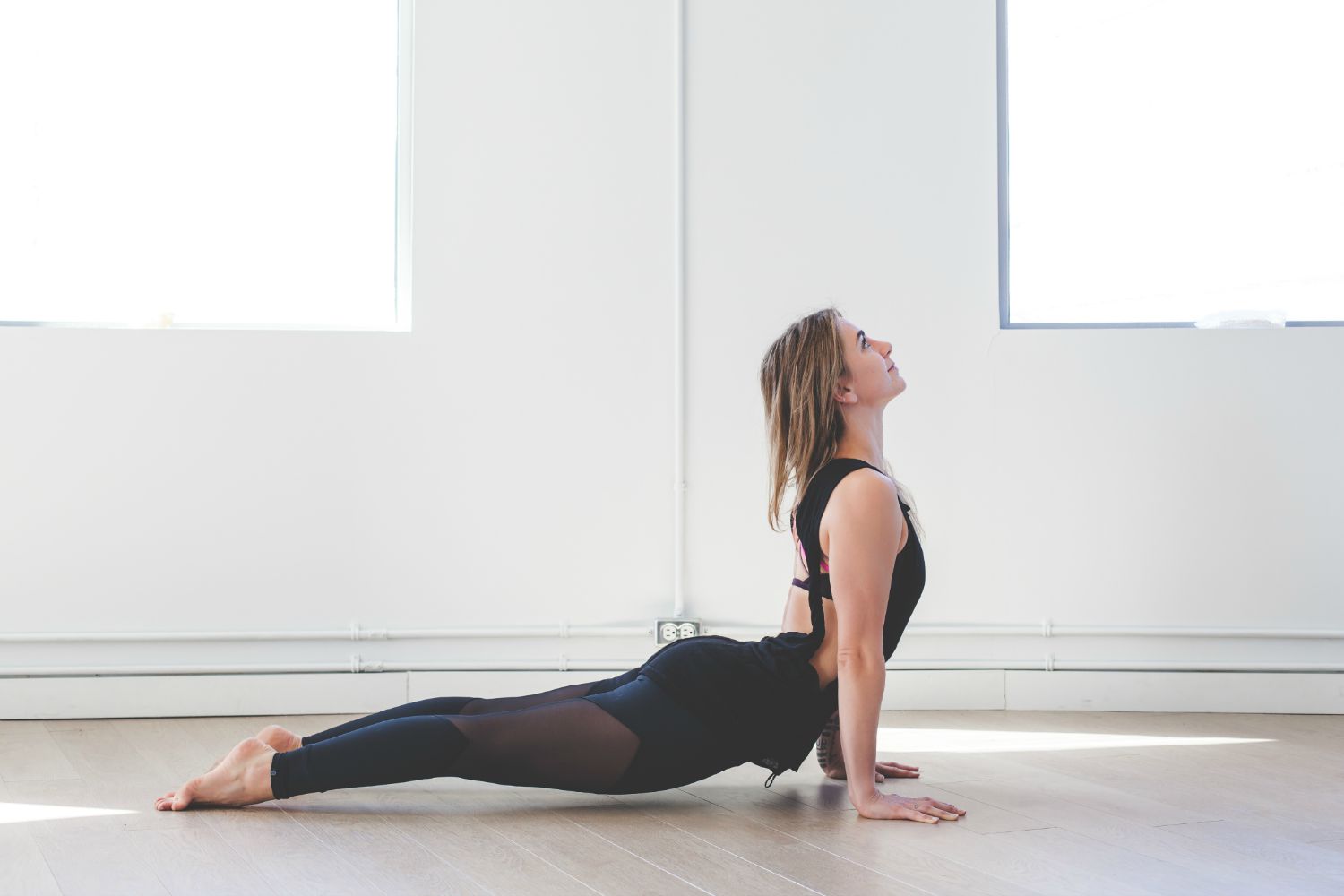
Yogalife Studios offers a variety of classes suitable for beginners. Check out Warm Foundation Flow, Beginner's Hot Flow, or Hatha Foundations to get a good base to move from.
We are also offering a 5-week registered Beginner Yoga course with Michelle Chung. This course is for those that have little or no experience to the practice of yoga. The registered classes will introduce you to fundamental postures (asana), breath work (pranayama) and the connection of breath and movement together (vinyasa), in a comfortable atmosphere with new yogis alike. Each week will be a progression in order to safely open up the body and build a solid foundation in the practice of yoga. Props will be used to help create space in the body, postures will be broken down to show proper alignment in order to prevent injury and emphasis will be given on breath and core control to help strengthen the body. Space will be limited so that new students will get the attention they need. Students should be able to easily go from standing to sitting on the floor and from sitting to standing.
Beginner Yoga - 5 Week Course with Michelle Chung Yogalife Studios South November 1 - December 6 || 2:30-3:45pm register here!
Foundation Friday || Eka Pada Koundinyanasana
Our Foundation Friday series delves into the basics of yoga—looking at its postures (asana), breath (pranayama), philosophy, and all the other essentials—giving you the foundations upon which to build a solid practice.
Today's post comes from Jenn Poholka, a Yogalifer who loves to fly!
Eka Pada Koundinyanasana, or Pose Dedicated to the Sage Koundinya, takes control of the breath, core strength, openness in the side body and trust in yourself.
1) Start to draw awareness to your breath. Inhale and exhale through your nose and match the length of your inhales to the length of your exhales. You can even awaken your Ujjayi Breath, still breathing through your nose, but with every exhale you will constrict the back of your throat.
2) It's important to warm up the core with poses like Navasana (boat pose) also laying on your back and doing leg raises and yogi bicycle to fire up your stomach muscles.
3) You can open the side body and strengthen your inner thighs with a lunge twist. From down dog step your right foot forward in between your hands. Shift your shoulders over your hips and joint your palms together at heart centre. With your inhale lengthen your spine, with your exhale hook your left elbow to the outside edge of your right leg. After a few breaths return to down dog and repeat the other side.
Now to get into the pose!
1) From down dog use your inhale to raise your right leg to the sky, with your exhale draw your right knee to your left tricep ( the outer edge of your arm).
2) Inhale to elongate your shoulders over your wrists and ground the inner edge of your hands as well as, the pads of your fingers. Use your exhale to bend your elbows and keep your elbows squeezing towards your side body (like chatarunga)
3) Inhale to shift your weight forward and extend your right leg, with your exhale hug your left thighbone to your hip socket and float your left toes off of the floor.
4) You can also get into the pose from your lunge twist. Just like the warm up, after you hook your left elbow to your leg disconnect your hands and place them shoulder width apart. Feel your spine grow with your inhale and use your exhale to lower your hands on the floor. Be sure to keep your elbows bent (Chatarunga). Root the inner edges of your hands and pads of your fingers and shift your weight forward as you feel your lower belly hug in and up float your left toes off of your mat.
*Believe in yourself and know that a few falls are always a great way to learn. *If you feel scared about falling forward or on your face you can put a pillow in front of you!
Foundation Friday || Ujjayi Breath
Our Foundation Friday series delves into the basics of yoga—looking at its postures (asana), breath (pranayama), philosophy, and all the other essentials—giving you the foundations upon which to build a solid practice.
 Find the balance of fierce grace with this essential yogic breath.
Find the balance of fierce grace with this essential yogic breath.
Foundation Friday || Ujjayi Breath
Ujjayi Breath Pranayama
"Ud" = moving upward, "Jaya" = conquest, victory fire breath, victorious breath, ocean breath
“Remember the connection between breath and movement: every movement comes out of breath. Rather than moving with and following the breath, the breath should initiate the movement. Practicing this way, we will be moved by the breath like the autumn wind picking up leaves.”
- Gregor Maehle
Ujjayi breath is a pranayama technique that allows you to focus and calm the mind. Often coupled with asana, this breath will guide you deeper into poses, steady your intention and allow you to experience your yoga more fully. In your practice, breath is regarded as the teacher; how you move and where you go is paralleled with the rhythm of your breath. Ujjayi breath is strong, fierce, warming - your pranayamic partner to bring you out of fear, anxiety, or judgement. Just as the intensity of your practice fluctuates, so does your breath. You may choose to use this fiery breath throughout your practice, or switch it up with a more gentle nostril breath like sama vritti to adjust the tone of the moment.
* note that Ujjayi pranayama involves breath retention and Ujjayi breath is the steady rhythm, sans retention
Benefits of Ujjayi Breath
- increases focus
- calms the mind
- builds concentration
- creates internal heat
- increases oxygenation
- tones the lungs
- facilitates the flow of prana
- builds energy throughout practice
- clears toxins
- creates awareness, especially within transitions of asanas
Foundation Friday | Prenatal Yoga
Our Foundation Friday series delves into the basics of yoga—looking at its postures (asana), breath (pranayama), philosophy, and all the other essentials—giving you the foundations upon which to build a solid practice. Today we're sharing tips on prenatal yoga.
Our post today comes from Emily NcNicoll (who you may remember from Monday), our prenatal-passionate yogalifer. This piece was written specifically for teachers and is equally important for an expecting yogi to understand the limits of her body and practice.
Pregnancy in Yoga by Emily McNicoll
Although it can be intimidating to have a pregnant lady walk into your class, it is a wonderful chance to serve a woman that is going through a lot of change and would likely appreciate your support. Remember that knowledge is power and keeping educated with simple guidelines can make a big difference to your teaching experience and the way in which you serve your community.
Just like asking people about injuries, being informed about a pregnant woman in class is important. A simple “If you’re pregnant, come have a chat with me before class starts” is a good way to let a woman know she is seen and cared for by her teacher. Also, talking with front desk staff at the studio can be a good way to stay informed. Knowing the basic do’s and don’ts about practicing yoga while pregnant is a great way to build confidence as a teacher and a great service to all potential students.
Things to keep in mind and at heart:
Pregnant women produce high levels of a hormone called Relaxin. One of the roles that this hormone has is allowing for the ligaments around the pelvis to relax therefore allowing the bones of the pelvis to shift for childbirth. In terms of any exercise that involves stretching, it is very important for a pregnant woman to stay away from acute sensation in her joints (i.e knees) as Relaxin can make her ligaments and tendons more susceptible to injuries than a person who is not pregnant. My advice to the woman is to engage firm foundation of hands and feet (hasta and pada bhanda,) avoid hyperextension, and ease away from any painful sensations.
Pregnancy tends to induce heat in the body as it is literally working to grow life. With this in mind, encouraging woman to ask the teacher to cool down the room when she is feeling too hot is really important. A cooler room is often a relief to a pregnant woman as her internal temperature is high. I often bring a sweater when I teach prenatal so all the woman can remain comfortable, myself included!
Just like paying close attention to painful sensations and her own temperature, encouraging a pregnant woman to set her own pace and listen to her body is important. Teaching modified postures first and then offering more challenging variations is a great way to allow a woman to empower herself with choice. One day she meets her mat she may be up for a lot of physical challenge and the next day it could be different. This is why as a teacher being educated in modifications and prop use is really important.
When a woman asks about other classes that she can attend, going through a studios schedule with her and advising her of a few “don’ts” is really important. Here are the things she should know when exploring her yoga practice:
Always talk to the teacher before class to inform them of the pregnancy.
No hot or warm yoga. As explained above, a pregnant womans body temperature is on the rise. It is important not to aggravate this further. Also, pregnancy is thought to be a good time to introvert and build the bodies energy. Hot yoga can easily exhaust energy reserves which are needed for childbirth and being a mother. This is another great reason to encourage a woman to go at her own pace as only she will truly know what she’s feeling and her own personal needs.
No core yoga. A little bit of core engagement is encouraged (like 20-25% of her capacity) as it helps to tone and strengthen the pelvic floor and support her spine and hips. A core yoga class would not be recommended.
No arm balances. Unless a woman already has a strong inversions practice, staying away from arm balances is a safe bet. The risk of her falling out of the posture must be considered. Keeping her and her child safe is obviously important. Likewise when doing one legged balancing postures. Pregnant woman should be encouraged to use a wall when getting into and out of the poses with the option to play with taking hands off the wall. Some women find their balance to be way different when they are pregnant and the wall is there for her safety.
No deep twists. Gentle twists are a great way to lengthen and restore the spine but deeper twists with core engagement are a great way to encourage elimination. Keeping a soft lower belly and lots of room for the uterus is important.
A couple other things to consider:
The feet in forward folds should be a little wider than hip distance apart. In the beginning stages of pregnancy it will leave space for the womb and with in the later stages it will be the best way to accommodate the babies growth.
In the second and third trimester laying flat on her back is not recommended. The baby can put pressure on the mothers aorta (a main artery) and cause loss of blood flow to the brain and heart. Modifying reclined postures like savasana with bolsters is a good way to keep her more upright. You can also recommend resting on the LEFT side with a bolster between the thighs and one under her head. The left side is important due to the position of the aorta.
Know your oils! Some essential oils can cause uterine contractions. If you’re using oils in class be aware of the contraindications and when in doubt, don’t use them.
If you're interested in prenatal classes at Yogalife Studios, please get in touch with us at info@yogalifestudios.ca or by calling either of the studios.
Our next round of prenatal yoga classes start December 4th at Yogalife Studios South with Sara Cueva and December 5th at Yogalife Studios North with Emily McNicoll.
Foundation Friday | Viparita Karani
Our Foundation Friday series delves into the basics of yoga—looking at its postures (asana), breath (pranayama), philosophy, and all the other essentials—giving you the foundations upon which to build a solid practice. Today we are exploring 'legs up the wall' pose, or Viparita Karani.
Foundation Friday | Viparita Karani
Viparita Karani
Viparita, inverted or turned around
Karani, action
One of the most gentle and nurturing ways to care for yourself is through restorative yoga, a passive form of practice that invites the use of props alongside long-held postures to facilitate subtle opening and overall relaxation of the body. In the case of viparita karani, the wall is your prop! This pose is a passive inversion and holds the same benefits of many other active poses in the same category.
Benefits of Viparita Karani
Legs up the Wall Pose is a restorative, relaxing and gentle inversion that has many benefits:
- Eases anxiety and stress
- Therapeutic for arthritis, headaches, high blood pressure, low blood pressure and insomnia
- Eases symptoms of premenstrual syndrome, menstrual cramps and menopause
- Relieves tired or cramped feet and legs
- Gently stretches the hamstrings, legs and lower bacK
- Relieves lower back pain
- Beneficial pose for varicose veins (takes pressure off the veins as blood is directed back to the heart)
- Calms the mind
- Grounds your back body into the earth
How do you get there?
- find a clear wall and snuggle your bum right up close to it
- swing your legs up the wall and lay flat on your back (your bum may not necessarily touch the wall when you first start, nor does it need to ever)
- you may put a foam block between you and the wall to press into if your bum isn't touching the wall
- position your legs straight up the wall and make sure your sacrum is flat on the ground
- ensure a bend in your ankles, like you were standing on the ground
- relax your arms out beside you with your palms facing up
- you may choose to use a towel under your head (just a single fold so it's not too high)
- relax into the pose for at least 1-2 minutes, although you may hold it for as long as you like
- to bring more space into your heart and lungs, you may choose to use a bolster, folded blanket, or foam blocks under your upper pelvis (hips cascading, shoulder blades on the floor)
- play around with the height of your hips, the placement of your arms, and the length of the pose to explore its benefits fully
Question Yourself, Know Your Roots
 “All that is gold does not glitter,
Not all those who wander are lost;
The old that is strong does not wither,
Deep roots are not reached by the frost.”
― J.R.R. Tolkien, The Fellowship of the Rings
“All that is gold does not glitter,
Not all those who wander are lost;
The old that is strong does not wither,
Deep roots are not reached by the frost.”
― J.R.R. Tolkien, The Fellowship of the Rings
Getting To Know You
Earlier this week we got the wheels rolling on journal writing and the pursuit of self-study. It can be daunting to sit down with a blank page and a full head and often times one single question can be contemplated for hours (weeks? years?!). This is the beauty of letting your mind go; a contemplation can turn into a novel that uncovers buried layers.
Recently we reviewed "Anatomy of the Sprit" by Caroline Myss, a book that takes you on a journey through your energetic Self; a healing quest full of knowledge and contemplations. As Myss goes through each chakra, Christian sacrament, and Kabbalah's Sefirots, she presents questions for you to personally explore each area within your own life. Writing and reflecting doesn't necessarily yield a direct answer every time you contemplate or muse; the insights spawned from acknowledging your questions are the medicine.
The following is Myss' introduction to the First Chakra: Tribal Power.
Knowing your tribe, community, family and environment is at the root of knowing yourself.
"The energy content of the first or Tribal chakra is tribal power. The word tribe is not only a synonym for family but an archetype, and as such it has connotations beyond its more conventional definition. Archetypally the word tribal connotes group identity, group force, group willpower, and group belief patterns. All of these meanings make up the energy content of our first chakra. The first chakra grounds us. It is our connection to traditional familial beliefs that support the formation of identity and a sense of belonging to a group of people in a geographic location."
Learn more about muladhara, the root chakra here.
Questions for Self-Examination
1. What belief patterns did you inherit from your family?
2. Which of those belief patterns that still have authority in your thinking can you acknowledge are no longer valid?
3. What superstitions do you have? Which have more authority over you than your own reasoning ability?
4. Do you have a personal code of honour? What is it?
5. Have you ever compromised your sense of honour? If so, have you taken steps to heal it?
6. Do you have any unfinished business with your family members? If so, list the reasons that prevent you from healing your family relationships.
7. List all the blessings that you feel came from your family.
8. If you are now raising a family of your own, list the qualities that you would like your children to learn from you.
9. What tribal traditions and rituals do you continue for yourself and your family?
10. Describe the tribal characteristics within yourself that you would like to strengthen and develop.
After all that writing and contemplation enjoy this grounding, root-based practice from Michele Theoret at Empowered Yoga.
Foundation Friday: Uttanasana
Our Foundation Friday series delves into the basics of yoga—looking at its postures (asana), breath (pranayama), philosophy, and all the other essentials—giving you the foundations upon which to build a solid practice. Today we are highlighting Uttanasana, or standing forward fold.
Foundation Friday: Uttanasana
Uttanasana || Standing Forward Fold OOH-tah-NAH-sah-nah
Ud (उद्; ud) = prefix for verbs or nouns, indicating superiority in location, rank, power, intensity Tana (तान; tāna) = "stretched" Uttana (उत्तान; uttāna) = "intense stretch" or "straight" or "stretched" Asana (आसन; āsana) meaning "posture" or "seat"
Uttanasana is an active time-out; your legs release, your feet root and ground you, your head is below your heart, and your spine releases. Taking time here allows your other postures to integrate and connects you to the present moment. With a variety of ways to execute uttanasana, you can tailor your experience in this asana to suit your intention. You may choose to dangle and sway, releasing tension from your entire back body, or you may choose a variation including a grip on the toes or hands under the feet with a more active core, spine and legs. Regardless, uttanasana allows you to hang your heart close to your body, a shape that offers inner reflection and the opportunity to create self-love. As our postures are medicine, this one bows you into your Self, creating a reverent pause to fall deeper in love.
Benefits of Uttanasana
- stretches your hips, hamstrings and calves
- strengthens your knees and thighs
- keeps your spine strong and flexible
- calms your mind, soothes your nerves
- reduces stress, anxiety, fatigue and depression
- releases neck, spine and back tension
- activates your core
- stimulates your kidneys, liver and spleen
- addresses symptoms of menopause, asthma, headaches and insomnia
- improves digestion
- can lower high blood pressure
Foundation Friday: Balasana
This post is yet another instalment in a series that delves into the basics of yoga—looking at its postures (asana), breath (pranayama), philosophy, and all the other essentials—giving you the foundations upon which to build a solid practice. Today's posture is another great addition to our Grounding Series.
Foundation Friday: Balasana
Pose, or Asana Child's Pose bah-lah-sah-nah
Mmm. Child's Pose.
Don't you just love it when your teacher says those words, offering you the chance to retreat inside, to turn inwards, to shut off all external noise and simply breathe? Child's pose, or Balasana, is frequently offered as a break within sequences, a time to re-establish steady breath, calm the heart rate, or return to intention if we've gravitated away from what we've set out to do.
Why is child's pose so grounding and calming?
- First of all, the shape of the spine in a child's pose mimics the shape of the spine in a fetal position—and our time in utero was, for most of us, the most stress-free, comforting, and grounded environment we've ever known. It's a gentle reminder to our bodies, and then our minds, to return to that calm, quiet state.
- Secondly, all forward folds are—in their physical nature—calming and quieting as our bodies are literally turning in towards themselves. The anatomical action of folding our bellies, chests, and faces into our legs—or in this case, the floor—seals us away from whatever is going on externally so we can only look at ourselves.
- Further, the action of resting the forehead down on something (the earth, stacked fists, a block) gently stimulates the vagus nerve. The vagus nerve helps to regulate the parasympathetic nervous system (the part that allows us to rest and relax), and in doing so it naturally lowers our heart rate, blood pressure, lessens tension and the stress hormone cortisol. That's why child's pose is also an excellent bed-time posture!
Balasana may help…
- Opens through your hips, thighs, and ankles
- Open the shoulders (especially in the traditional variation)
- Calm anxiety, soothe stress, and relieve fatigue
- Help move your nervous system into a more relaxed state
So, how do I get there?
- From Downward Facing Dog, lower your knees down, about mat-distance apart.
- Touch your toes together, and rest your seat back on your heels.
- Fold your torso forward. Let your belly rest in between your thighs.
- Extend your arms forward, palms facing down.
- Find someplace for your forehead to rest—if the ground is not available, you can use a block, a folded blanket, or even stack your palms or your fists.
- Breathe.
We hope this helps you better understand balasana, or child's pose. Please feel free to comment on our Facebook with any further questions. And let us know if you have something you would like to see featured in Foundation Friday!
Foundation Friday: Tadasana
This post is an instalment in a series that delves into the basics of yoga—looking at its postures (asana), breath (pranayama), philosophy, and all the other essentials—giving you the foundations upon which to build a solid practice. Today’s focus will be on Tadasana, or Mountain Pose.
Foundation Friday: Tadasana
Pose, or Asana Tadasana, or “Mountain Pose”
Tada - Mountain, Asana - Pose tah-dah-sah-nah
This month we're sharing our favourite grounding poses and, as the name suggests, Mountain Pose creates stable roots from which to rise. Depending on the style of yoga you are practicing, you may also hear this pose referred to as Samasthitiḥ. Essentially, this is your center. Tadasana creates a feeling of union in your body; a sense of connection to the earth and the sky. Just as the majestic mountains boast height and width to secure their stature to the planet, tadasana is your foundation to feel grounded.
Although tadasana is a basic pose, it is the blueprint for many other poses (you could almost say all!). You can find this anatomical position of the body in many other poses and relate how that center stability is present in other asanas. It is an important pose to allow your body to receive and integrate the information and benefits from your practice. Tadasana allows you to recalibrate and prepare for the next posture; stability and grounding are the foundations of this pose.
Benefits of Tadasana...
- corrects posture
- strengthens feet, ankles, knees and thighs
- steadies the breath
- increases awareness
- tightens the core
- relieves sciatica
- helps flat foot
- helps to strengthen and lengthen the spine
- increases energy
- beings harmony to the mind and body
How Do I Get There?
1. Start standing with your feet hip distance or wider - make sure this is a comfortable, stable stance.
2. Check in for foot/ankle alignment - the base of the second toe lines up with the center of your ankle. You may choose to sway gently here, finding the balance in the souls of your feet to ground down with.
3. Engage pada bandha, drawing energy up the inner line of your leg to stabilize your knees and charge your thighs all the way up to your pelvic floor, finding a subtle connection to your core.
4. Supinate (rotate outwards) your arms to create "anatomical position". Allow your thumbs to open up outward, rolling your arms open and creating space in your collarbones and shoulders as your scapulae gently draw onto your back. Watch that your ribs don't jut forward here - use core stability to keep the spine growing tall right through your crown.
5. Relax your shoulders and draw attention to your back body - feel the base of your skull stack over the back of your heart and sacrum. This back body awareness allows you to feel genuinely stacked and supported: rooted from your feet, all the way into your lower back, shoulders, and head.
6. Balance the crown of your head directly over the center of your pelvis, with the underside of your chin parallel to the floor, throat soft. Soften your eyes.
7. Tadasana is generally the starting point of all standing postures, although it is an important posture in itself. Stay in the pose for at least 30 seconds to a minute, scanning the alignment through your entire body and focusing on your breath.
We hope this helps you better understand this essential posture, tadasana. Please feel free to comment on our Facebook with any further questions. And let us know if you have something you would like to see featured in Foundation Friday!
Foundation Friday: Malasana
This post is an instalment in a series that delves into the basics of yoga—looking at its postures (asana), breath (pranayama), philosophy, and all the other essentials—giving you the foundations upon which to build a solid practice. Today's focus will be on Malasana, or Garland Pose.
Foundation Friday: Malasana
Pose, or Asana Garland Pose, or "Yogi Squat" mah-lah-sah-nah
In conjunction with our monthly theme, Malasana is one of the ultimate grounding yoga postures. The rooting through the feet, the closeness of the pelvis to the earth, and the general feeling of heaviness and surrendering to the weight of gravity in this posture all encourage a downward flow of energy. Malasana's energetic qualities are calming, soothing, and quieting for the busy mind, as this asana activates a flow of prana down through the body, towards the ultimate source of grounding—the earth.
Many Eastern cultures are accustomed to sitting on the floor for meals and meetings, or squatting comfortably as they go about their daily activities— whereas In our Western world, we spend so much of our lives seated in chairs, car seats, or on couches. We lose the softness and suppleness of our hips, calves, and ankles, and the strength of our low back, thighs, and core. Physically and energetically, malasana helps to counteract these losses.
Malasana may help…
- Tone your thighs, glutes, and calves
- Strengthen your low back and abdominal muscles
- Open through your hips and inner thighs
- Aid in digestion and elimination
- Soothe anxiety and promote calm
So, how do I get there?
- Start standing with your feet about mat-distance apart. Turn your toes slightly outwards.
- Lower your hips in between your legs. Keep your heels on the floor if you can, or support them with a folded mat or towel. You might even try this posture with a prop—like a block, or bolster under your seat.
- Draw your hands into anjali mudra (prayer position) and slide your shoulders back. Press your outer elbows into your inner thighs, and vice versa. If this is too much, keep both of your hands on the floor in front of you for support.
- Lengthen your tailbone down towards the earth—like gravity is pulling it lower—but lengthen the crown of your head higher to elongate your spine.
- Broaden the front of your chest.
We hope this helps you better malasana, or garland pose. Please feel free to comment on our Facebook with any further questions. And let us know if you have something you would like to see featured in Foundation Friday!
Foundation Friday: The Spine
A reclined twist is a wonderful, gentle way to nourish, massage and lengthen by inviting rotation to the thoracic and cervical spine.
Foundation Friday: The Spine
Fitting with foundation, today we're taking a look at the spine: the literal backbone of life! Spine alignment comes into play with each and every asana and yoga is an amazing practice for spine health and rehabilitation. At the most basic level, the spine is comprised (normally) of 33 vertebrae - 24 articulated and separated from each other by intervertebral discs, the 9 lower vertebrae fused together (5 in the sacrum and 4 in the coccyx or tailbone). A healthy spine has 4 curves to it - a lordodic curve in the cervical and lumbar spine and a kyphotic curve in the thoracic and sacral spine - which creates a balance to support two main functions of the skeletal system: stability and mobility.
Spinal Rotation
In yoga we refer to the rotation of the spine as a twist, often used throughout a sequence at varying levels of intensity. Twists may be active or passive, supported or strengthening. In general, they are all meant to lengthen and nourish the spine. It is important to remember to twist from your thoracic spine and allow the twist to finish in your cervical spine for full rotation. As always, it is also important to listen to your body and especially not overdo these poses. Let your breath guide you into depth. Cherish this masterpiece within your body!
Other Ways To Move Your Spine
Action: Spinal Flexion Asana: Cat
As you press into the earth, hollow your tummy and round your spine, flexion is created by deepening the thoracic spine's natural kyphosis. The natural curve of the cervical and lumbar regions allow the flexion to continue in the neck and lower back.
Action: Spinal Extension Asana: Cow
Spinal extension is created by tilting your sit bones and heart upwards, rolling your shoulders back and lifting through your collarbones. This hammock shape provides the opposite curve that the thoracic spine is normally resting in and range of motion may be limited here. It is important to concentrate on lengthening your energy and breath through the entire spine to free up tension from the lumbar region.
Action: Lateral Flexion Asana: Crescent Moon
As the legs and pelvis root into the earth, the spine lengthens up and over to the side in a C-curve to create lateral flexion. Be mindful of space in this pose, especially around the shoulders. By keeping soft and your upper back and neck and connected in your core, the spine will be supported to move in this manner. The most freedom will be felt in the cervical and lumbar spinal curves.
"The yogi will tell you that you feel and look as young as your spine is elastic."
Richard Hittleman
Learn to Fly: This Saturday with Sara Cueva
This weekend, Yogalife Instructor and Karma Coordinator (and co-host of our current Instagram challenge!) Sara Cueva is leading her popular Arm Balances and Inversions workshop at Yogalife South. Check out the video we shot with Sara last year to learn a little more about why she's so passionate about taking flight within yoga practice—and gain some insight into the goodies you'll learn in Saturday's class!
Arm balances and inversions with Sara from Yogalife Studios on Vimeo.
Learn to Fly with Sara Cueva runs this Saturday, September 6th at Yogalife South from 2:30 p.m.-5:30 p.m. Sign up here.
Foundation Friday: Anjaneyasana
This post is an instalment in a series that delves into the basics of yoga—looking at its postures (asana), breath (pranayama), philosophy, and all the other essentials—giving you the foundations upon which to build a solid practice. Today's focus will be on Anjaneyasana, or Crescent Lunge Pose.
Foundation Friday: Anjaneyasana
Pose, or Asana "Crescent Lunge Pose" ahn-jahn-eh-yass-a-nah
Anjaneyasana, or Crescent Lunge Pose is a posture you'll find in nearly every yoga class. You might find yourself in an Anjaneyasana variation with your back knee lifted or lowered, toes tucked under or not, perhaps in a slight back bend, or with your arms reaching back like you're a runner about to leap off your starting block. Lunges strengthen and stretch the feet, legs, hips, core, back, and even the shoulders and arms—this posture gets your whole body involved!
Anjaneyasana may help…
- Relieve symptoms of sciatica
- Build stabilizing muscles in your legs
- Open through your hips, shoulders, groin, armpits, and neck
- Strengthen your thighs, calves, arches, back, shoulders, and arms
So, how do I get there?
- From Adho Mukha Svanasana (Downward Facing Dog), step your right foot up in between your hands. Or, from Tadasana (Mountain Pose), bend your knees and take a long step back with your left leg. Ensure your legs are hip-distance apart.
- Lunge into your front leg—bend your front knee to a 90-degree angle, while ensuring your stance is long enough that your front ankle lines up directly underneath your knee.
- Choose to lower your back knee (low lunge), or keep it lifted (high lunge). *If lowering your back knee bothers your knee joint, you can place a foam composite block underneath that knee, or fold your mat over to offer the joint extra padding.
- Press your front foot down strongly to lift your torso so that it's vertical, stacking your shoulders over your hips.
- Squeeze your inner thighs towards each other to press your right hip back and your left hip forward, so your hips are square.
- Root your tailbone, but lengthen up throughout your spine to the crown of your head.
- Reach your arms skyward, slide your shoulders back and down your spine, and fan your fingers out wide.
We hope this helps you better anjaneyasana, or crescent lunge pose. Please feel free to comment on our Facebook with any further questions. And let us know if you have something you would like to see featured in Foundation Friday!
Categories
- Recipe 11
- Wellness 241
- Zen Habits & Inspiration 100
- Injury Prevention & Health 30
- Classes 1
- Yogalife Classes 7
- Prop Specific 1
- Studio Information 17
- Foundation Friday 25
- Physical Health 3
- Yoga Specific 54
- Curated Playlists 2
- Karma Program 5
- Staff Adventures & Journeys 10
- Anatomy & Information 30
- Community Event 15
- YEG Highlight 8
- Instructor Stories 22
- Yogi of the Month 13
- What's Going On 35
- Yogalife Workshops, Retreats & Trainings 37
- Relaxation 1
- Mental Health 2
- Workshops 34
- Registered Classes 4
- Pregnancy & Family 1
- Member Stories 5


